Japan’s JR East Railway (East Japan Railway Company), operator of the Hokuriku, Joetsu, and Tohoku Shinkansen lines diverging north of Tokyo, recently launched its latest Series E8 Shinkansen train sets on the Yamagata mini-Shinkansen line to the Yamagata prefecture.
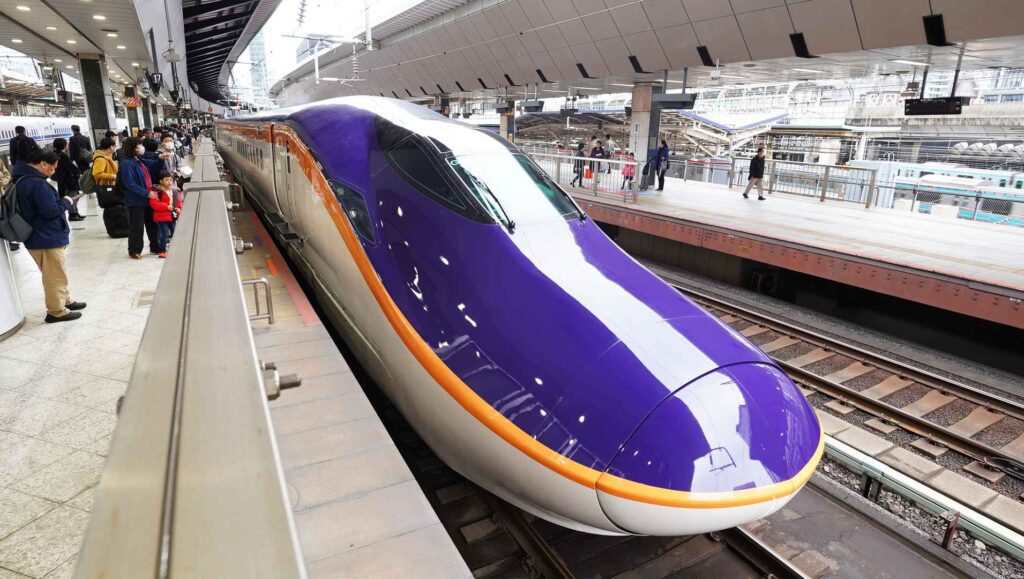
The Series E8 Shinkansen launched for service on March 16, 2024, only three weeks ago. I first learned about this train in February, while taking the Shinkansen E7 series on the Hokuriku service. This is the first new model of Yamagata Shinkansen bullet train in about 20 years, with the legacy E3 series serving the prefecture and Tsubasa Service since launching in the 1990s.
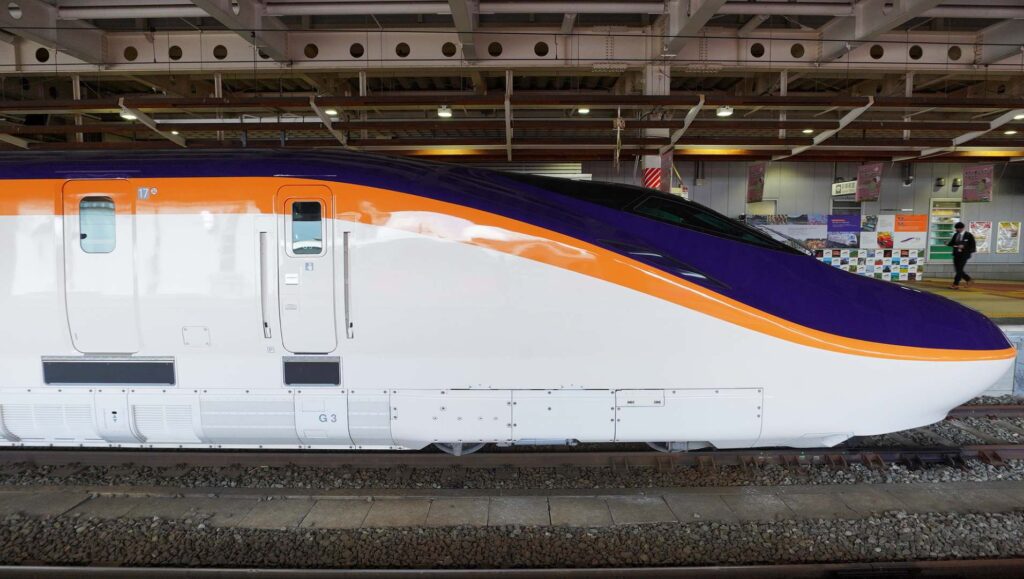
It’s worth noting that on the exact same day, JR East also launched the new Hokuriku Shinkansen extension to the Fukui and Tsuruga area in western Japan, another service I will eventually post here on Oscape. Eventually, that line will be extended to Kyoto and also Osaka, giving riders a third option between Tokyo and Osaka (the second will be the new Chuo Shinkansen Maglev line currently under construction).
I took the Standard Class northbound, and Green Class southbound.
Background
The E8 Shinkansen is a massive upgrade over the previous Series E3 Shinkansens that also run on this route. The Yamagata line was upgraded to Shinkansen services in the 1990s, and the track was converted from Japan’s narrow gauge rail system to a Shinkansen standard gauge operation.
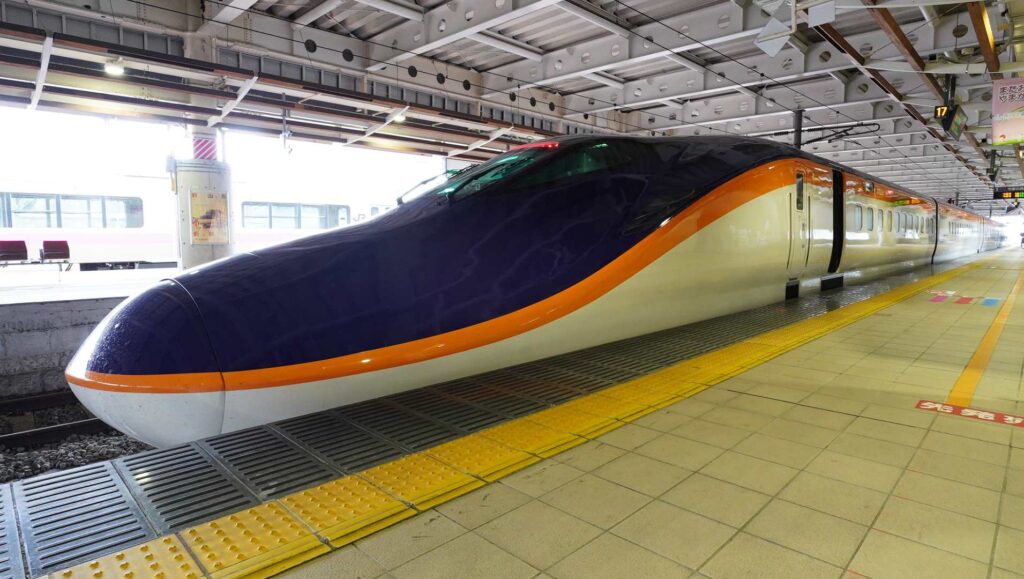
However, the loading gauge on the lines has not changed – meaning these trains are narrower than other Shinkansen to clear the tunnels, tight curves, and narrower legacy platforms on the route.
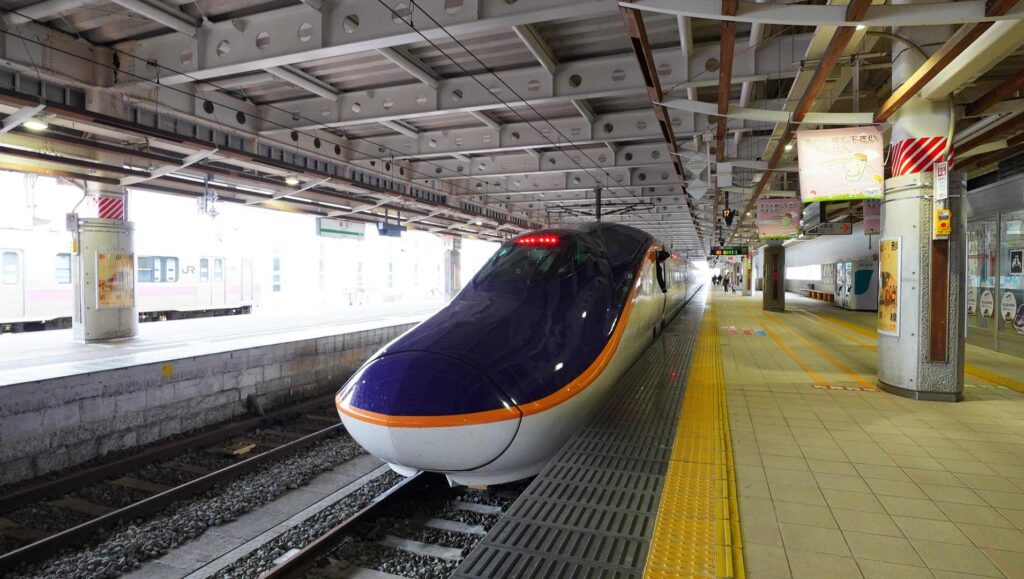
The Series E8 Shinkansen car body is made of aluminum alloy to reduce weight, and the train is fitted with single-arm low-noise pantographs. These trains have five powered cars and two trailer cars, and can operate under both 20kV and 25kV 50 Hz electrification. The trains are fitted with an active tilting suspension to improve ride comfort. To improve stability in the heavy snow this line sees in mountain passes, the bogies are equipped with heaters to prevent snow build up.

The maximum operating speed on the Tohoku Shinkansen section has also been increased from 275km/h to 300km/h (from 171mph to 186mph) between Utsunomiya and Fukushima, operating in combination with the Series E5 Shinkansen on the Tohoku services to Sendai. The maximum operating speed on the Yamagata mini-Shinkansen section remains 130km/h (80mph). With the E8 series, these trains are capable of running at the full top speed on this route, resulting in a four minutes improved ride time on the full route.
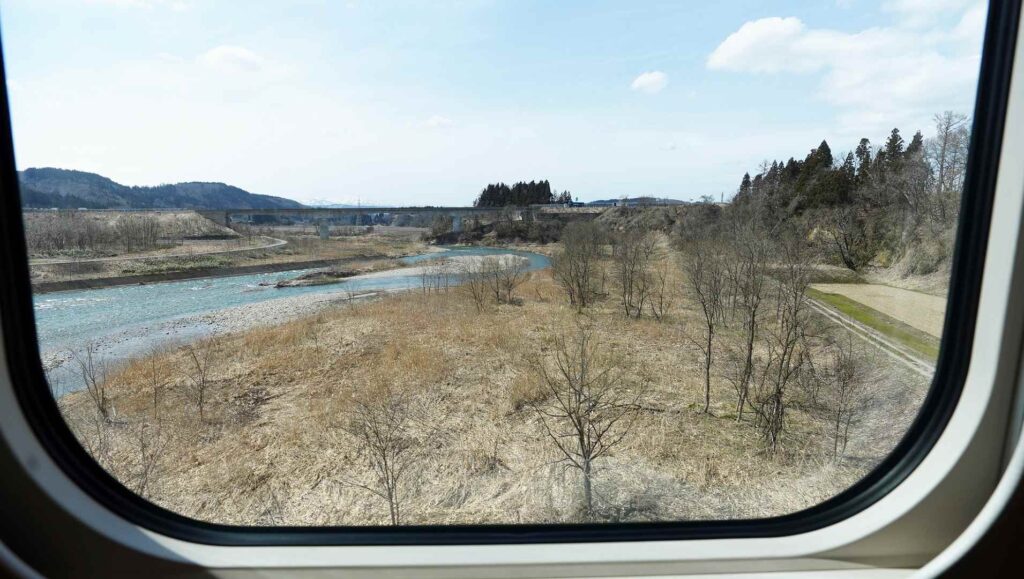
While that may not sound like a lot from a passenger’s perspective, operationally this is massive for the railway, as it allows all trains to run at the same speed on this line rather than at a variable differential, thereby increasing train capacity on the entire line. In other words, 186mph trains will no longer have to follow behind 171mph trains, and this will increase the number of trains per hour that can operate on the main line.

Just like if you were following a slow car or truck driving on a single lane highway, on the railway this creates a backlog of trains flowing behind the slower train at the same speed. Now, the line’s train frequency can be increased without building additional infrastructure.

The other mini-Shinkansen on this line, the Akita Shinkansen, operates with very modern Series E6 train sets that were launched in 2013.
Series E8 Shinkansen Train Schedule Thru June 2024
If you’re planning on taking the E8 or want to take the E8 for the train launch, this line still shares services with the legacy Series E3 trainsets. At the time of writing, there were only 3 Series E8 Shinkansens in operation.
Below is the upcoming schedule for the next few months. Note that the top Rows are FROM Tokyo, TO Shinjo, whereas the bottom are TO Tokyo, FROM Shinjo.
March 2024

April 2024

May 2024
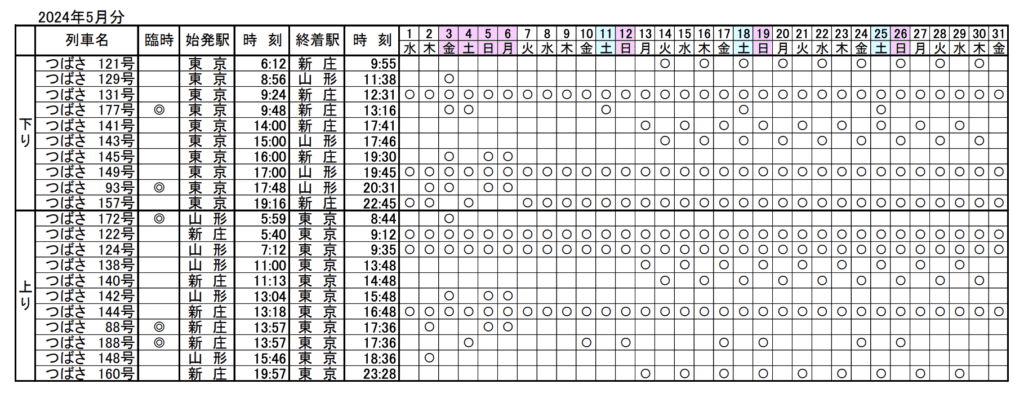
June 2024
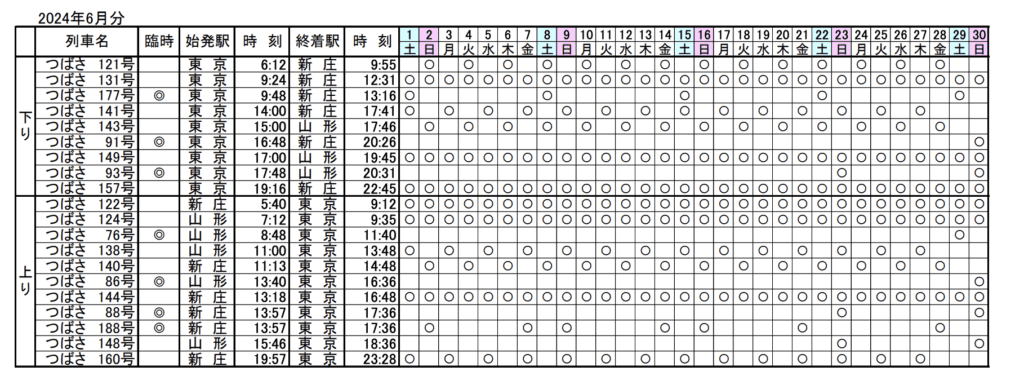
Booking the Yamagata Shinkansen Series E8 in Standard Class
I booked my ticket on the phone the day before my ride.

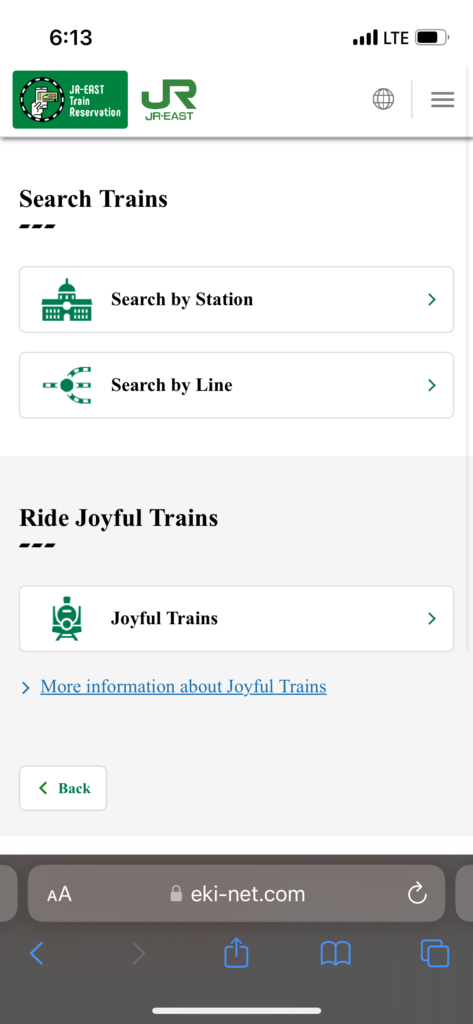
The booking process is straightforward – first select “Purchase tickets,” then “Search By Station.”
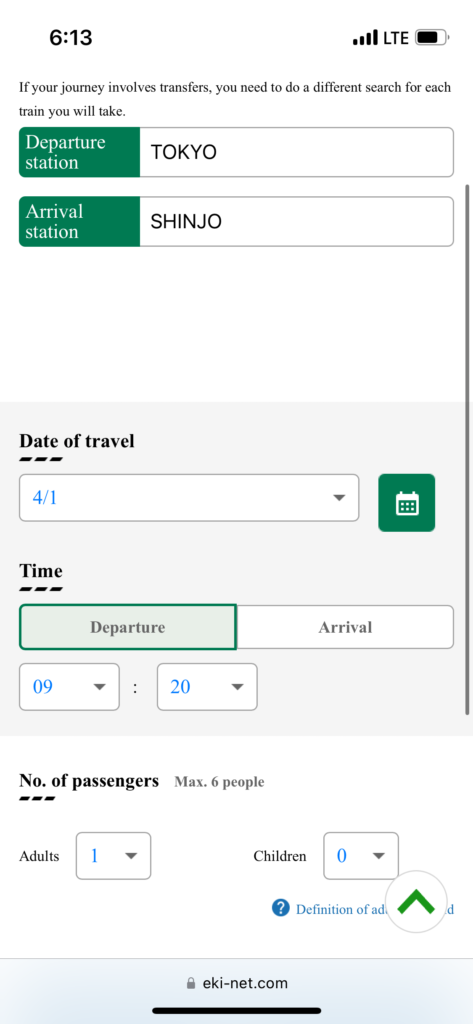
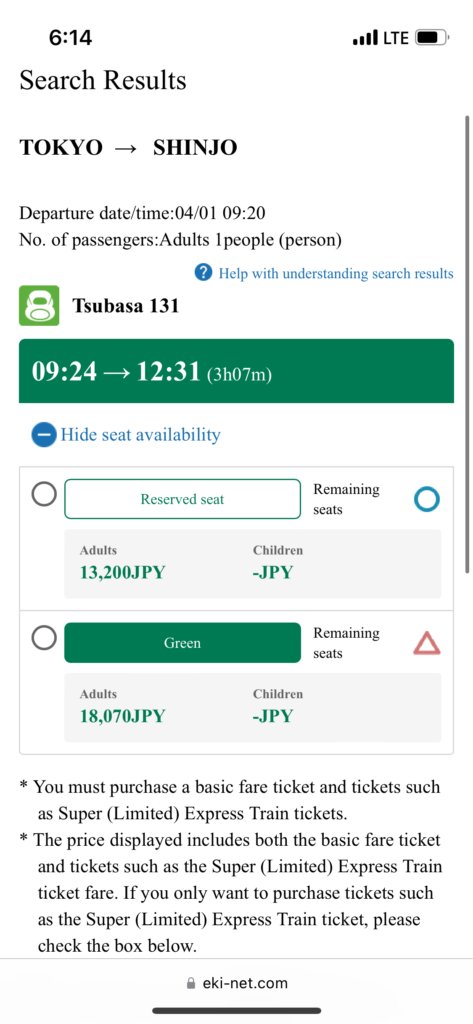
I picked the approximate time and found the specific train I wanted.
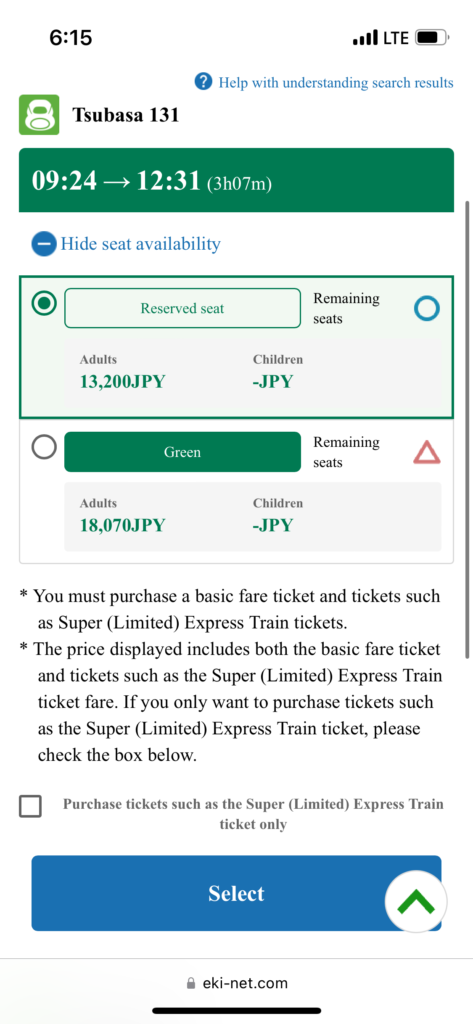
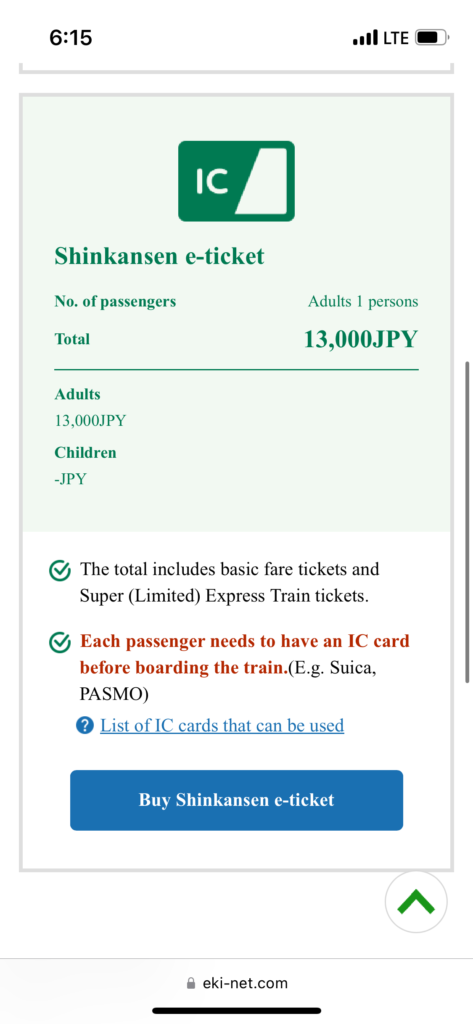
I chose a Reserved Seat, meaning Standard Class. This was approximately $83 USD for a one-way ticket, versus Green Class at $115 USD.

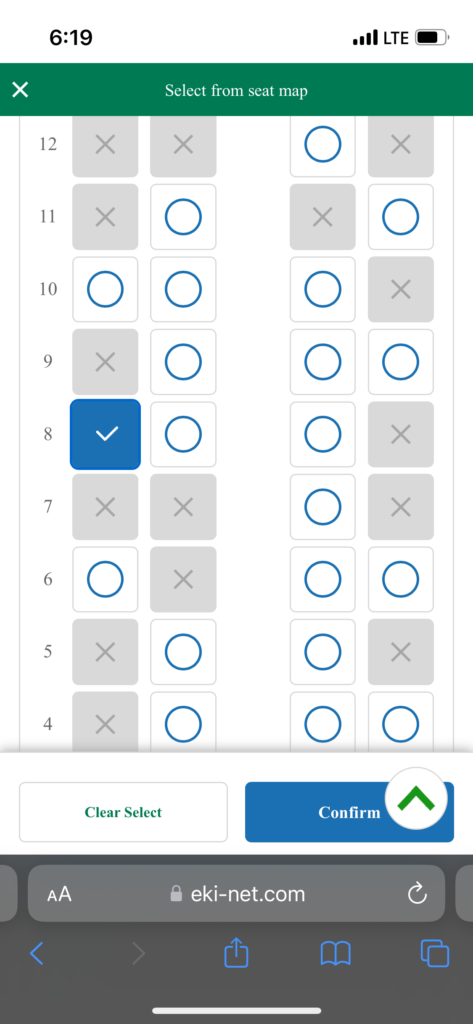
Unlike in Green Class, there was tons of room available in Standard Class.
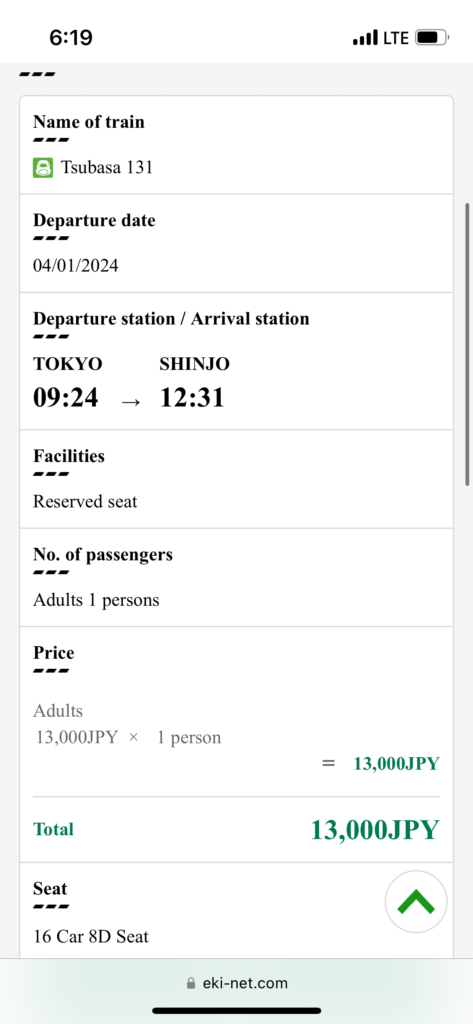
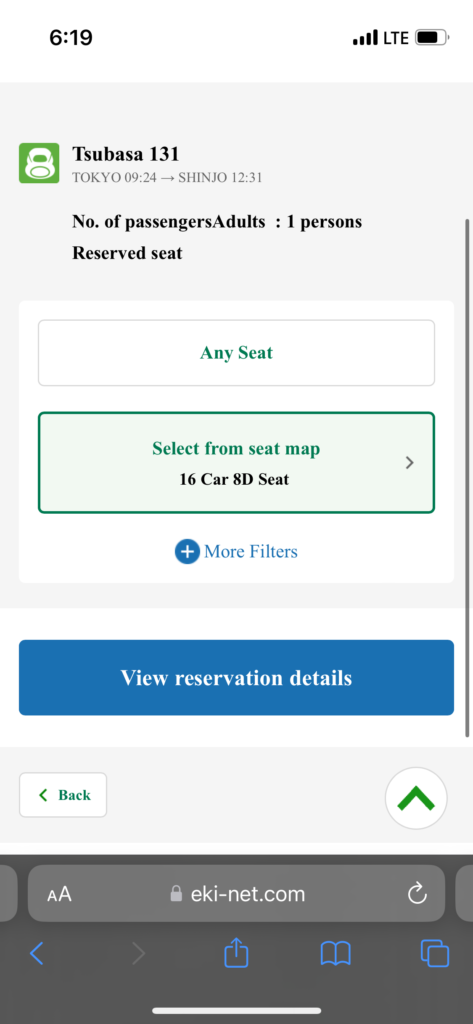
I highly recommend to all readers using the Shinkansen to link your reservation to an IC card.
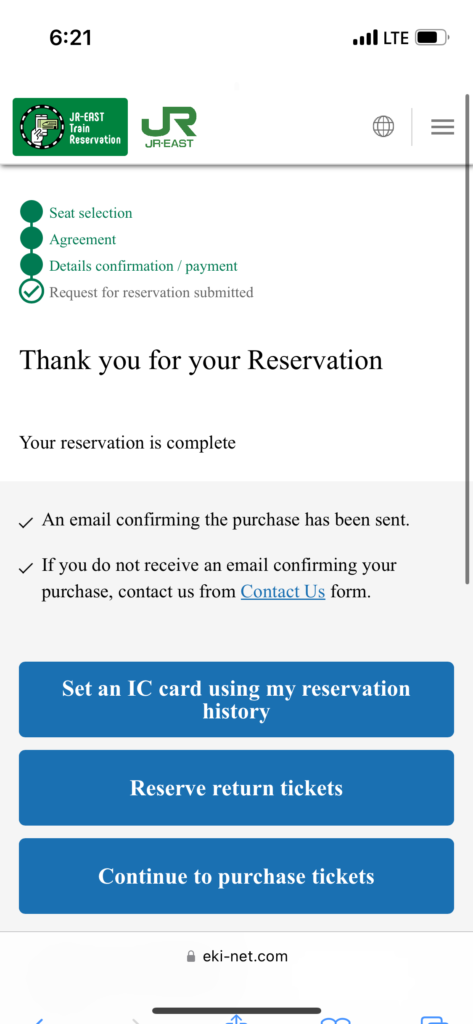
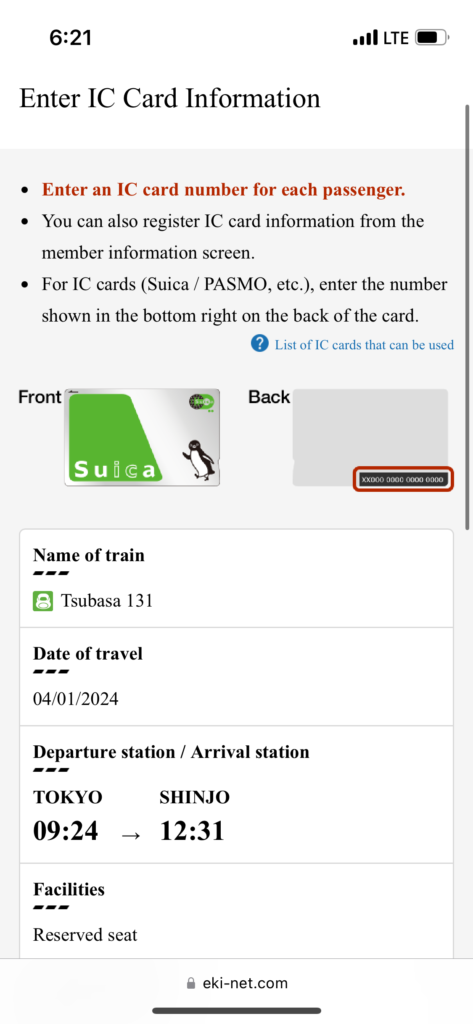
This critical step avoids all lines associated with taking the Shinkansen, which can be very long at times!
Series E8 Shinkansen Train Configuration
The E8 Series Shinkansen starts in Tokyo coupled to the Series E5 Tohoku Shinkansen services bound for Sendai in northern Japan.
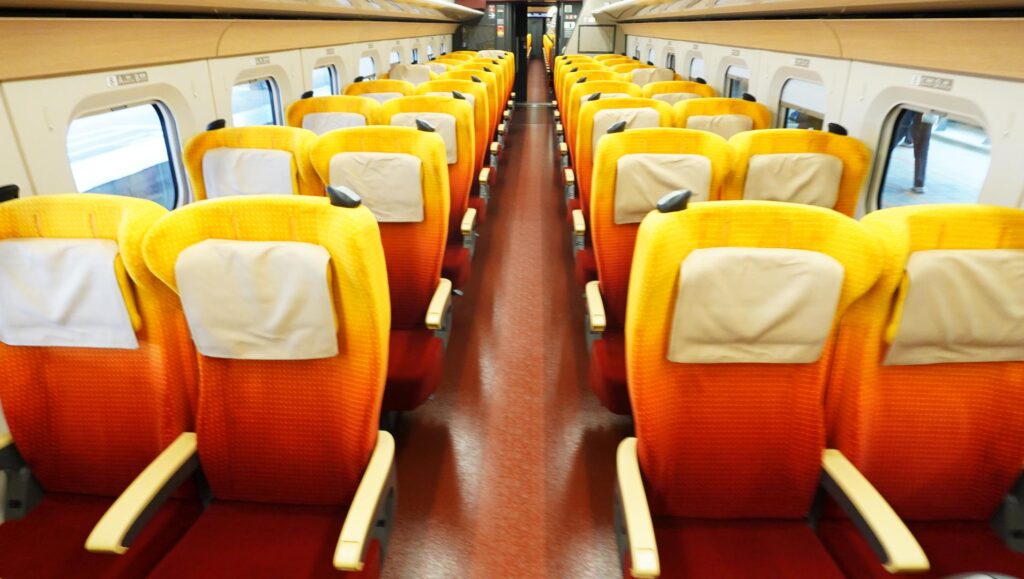
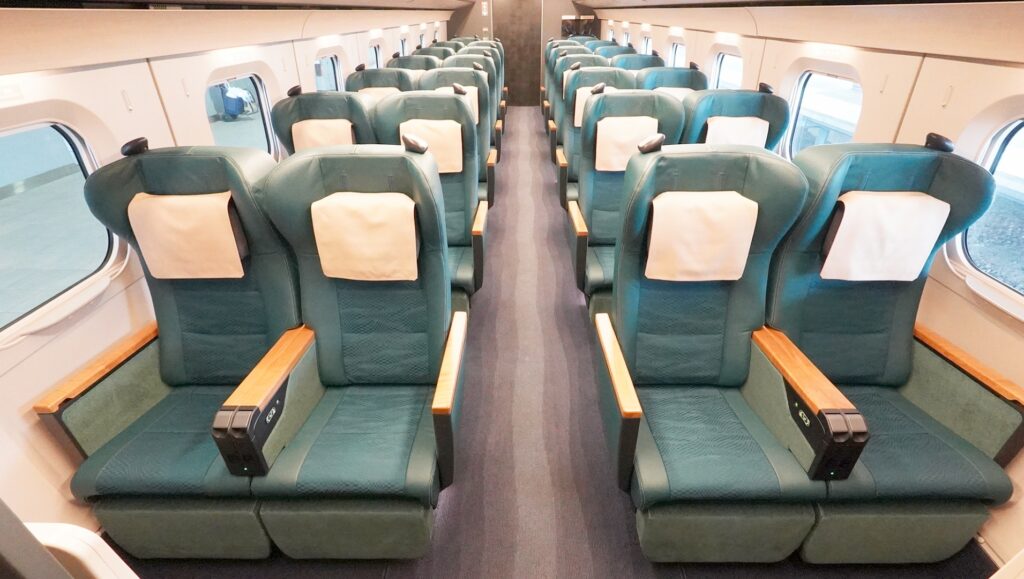
Both Green Class (Business Class) and Standard Class (Economy Class) are configured in a 2+2 orientation. This is because this train is much narrower than other Shinkansen, given that it operates on standard Japanese rail lines in Yamagata, with more limited clearances and tighter curves.
The capacity of the Series E8 Shinkansen is 355 seats, divided:
- 26 seats in the Green Car (Car 11)
- 329 seats in the Standard Cars (Cars 12-17)
Car 11 on one end of the train features the Green Car cabin. I’ve featured this in a separate review, on my southbound run on the the train. On the southbound run, this is connected to the Tohoku service at Fukushima – but, you get the front car between Shinjo and Fukushima.
Cars 12 thru 17 are for regular economy class, in various configurations. I was seated in Car 16 this time, although in retrospect I think Car 17 is the coolest for the Northbound run, given that it’s at the front end of the train.
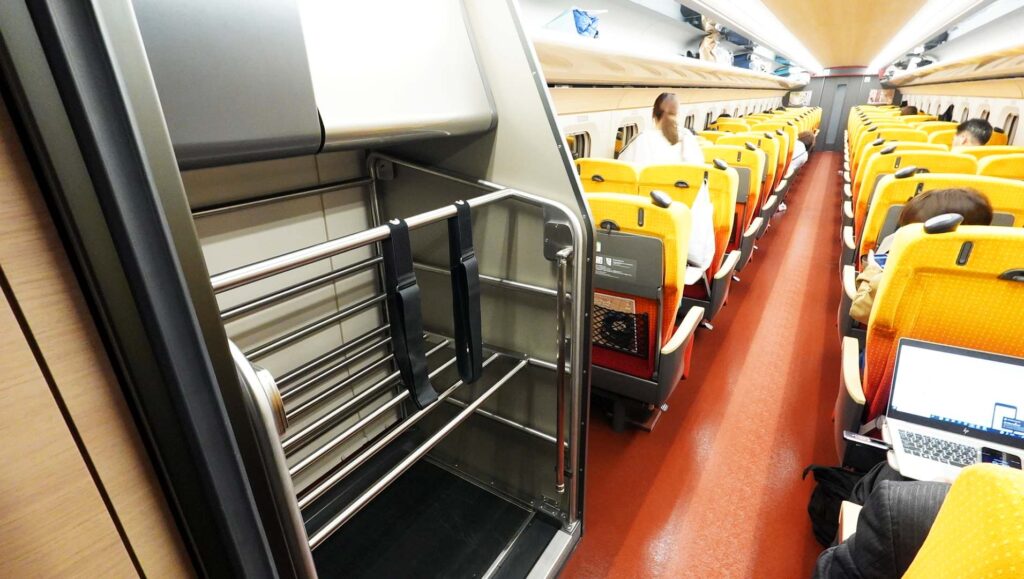
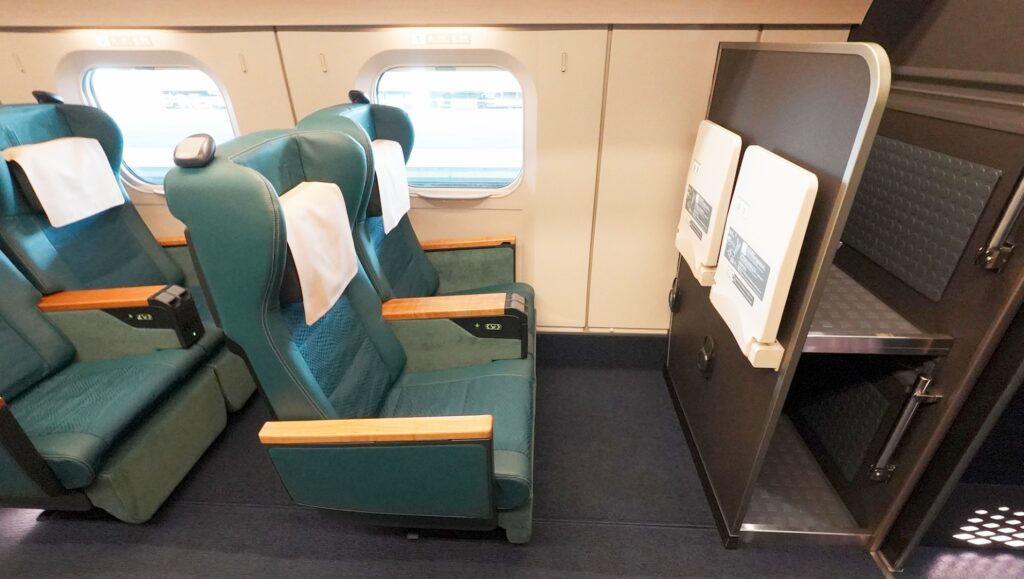
There are luggage racks available at the back side of each Standard Class and Green Class car. These are wide and deep, but there are also only two racks available.

There’s also an area behind the last seat in each cabin, where you can store larger pieces of luggage upright.
Should I Choose Standard Class or Green Class?
Economy Class has significantly more availability, given the amount of seats in this cabin and the limited amount of seats in Green Class.
The cost differential between Economy Class and Green Class is about ~5,000 yen. I think this is worth it if you’re looking for a private cabin experience and also want slightly more comfortable seats for sleeping, with reading lights. If traveling as a couple, I actually prefer Standard Class.
The biggest difference is in the seats and their offerings.
Choose Green Class If
- You want privacy.
- You plan to sleep – the seats are much more comfortable.
- You need to read, and need an overhead reading light.
- If you’re heading southbound, you’ll. be at the very front of the train.
- You need additional working space for larger laptops and other papers.
- It’s also nice to have a second working and storage surface.
Choose Economy Class If
- You’re traveling with a partner or a group.
- You want to combine two seats into one with your partners, and sit/share the seat together.
- You want to save 5000 JPY and don’t care as much about seat comfort – they’re only mildly different.
- You want underseat storage for your belongings.
Series E8 Shinkansen Standard Class Seat Details
The standard class cars have a sunny atmosphere, with bright yellow and red seats designed to be reminiscent of safflower, the Yamagata Prefecture’s flower.

The first notable comment on my train ride was the new-train smell! That’s a first that I’ve never witnesses before – it smells magnificent!

Standard Class features beautiful seats with red, yellow and orange fabrics. The cushions are “stiff” but also very comfortable.
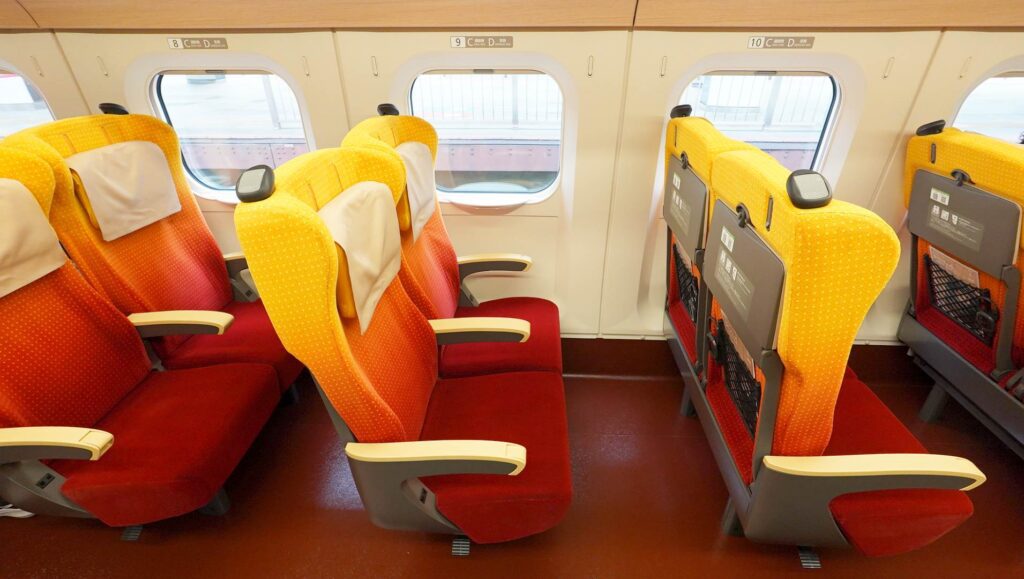
The headrests are moveable, and include a roughly two inch cushion for your head.
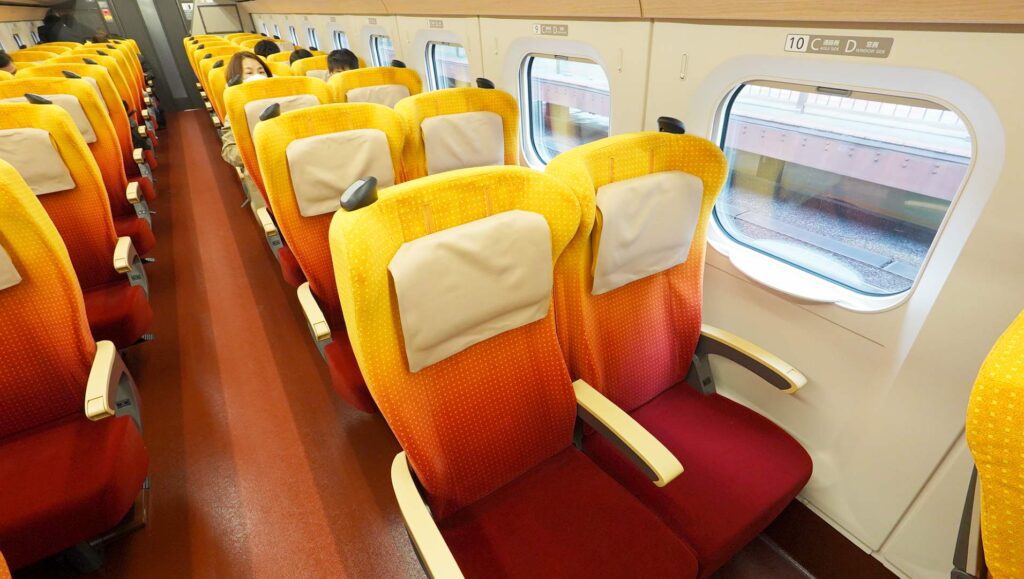
The seat recline at these seats is significant. When upright, the seat is extremely upright and stiff-feeling. However, you can recline into a very comfortable position.
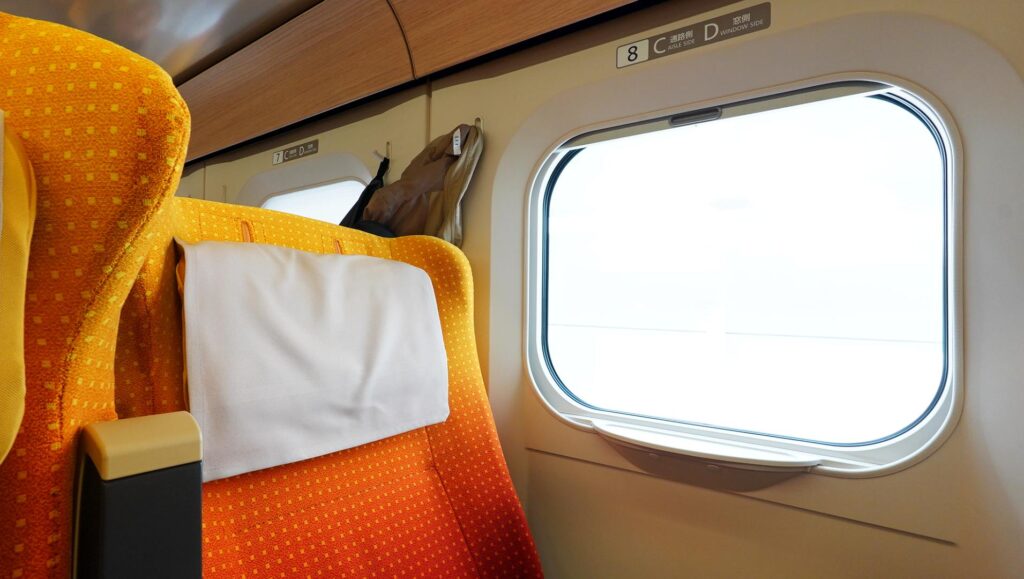
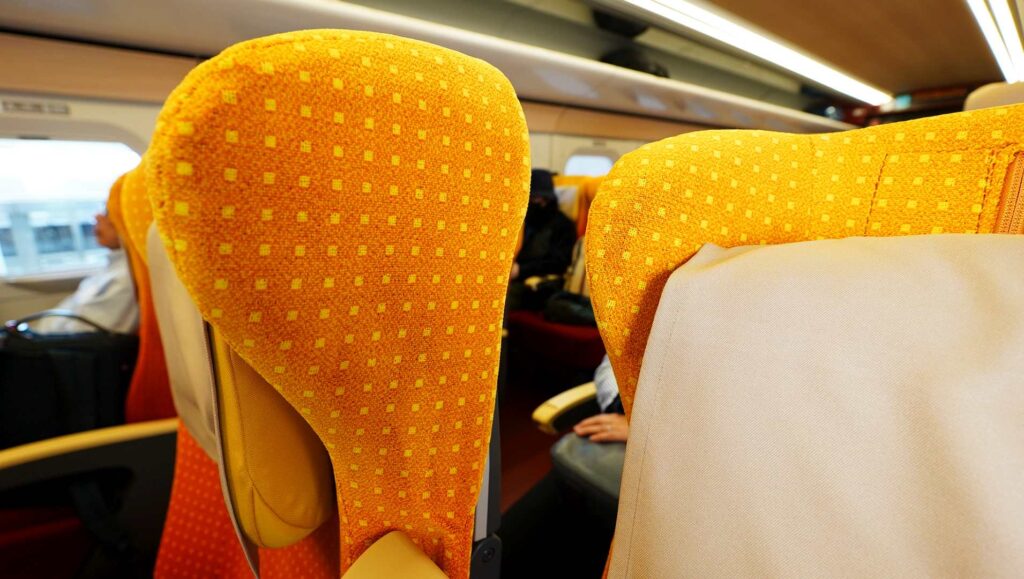
If there’s no one next to you, also creates an area where you can lay your head against the side of the seat. I think this is extremely comfortable for sleeping when the aisle side seat is not reclined, and the window side seat is fully reclined (or vice versa).

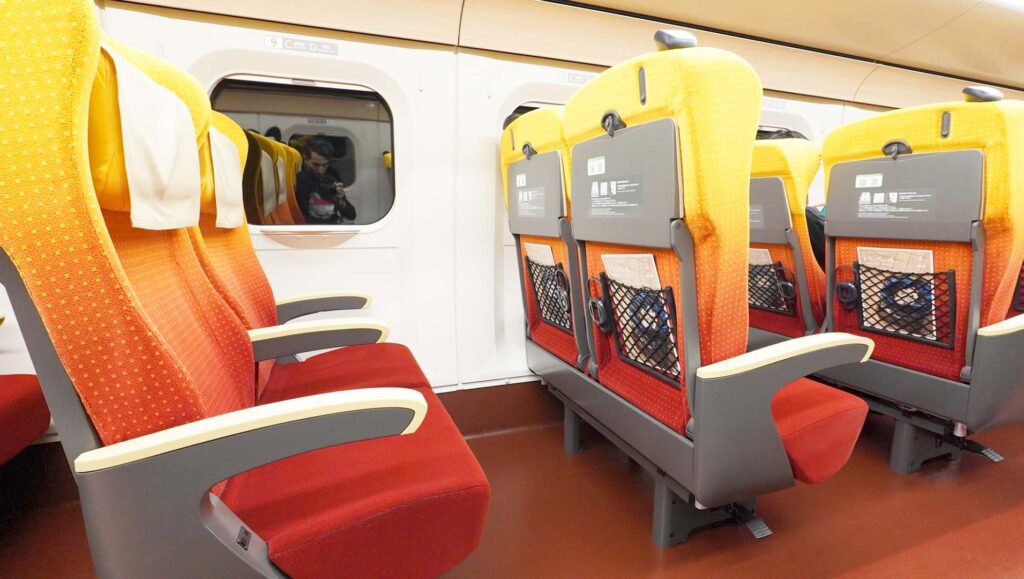
There’s a LOT of legroom at these seats. Even when the passenger ahead of you has the seat reclined fully, this is not obtrusive. Sitting upright, I still had about one foot of knee-legroom ahead of me even as the forward passenger fully reclined his seat.

There’s a tray table ahead of the seat, which folds down once you unlock the latch.

The tray table is very stable and also includes a small inset for a drink. It doesn’t move up or down much even with lots of pressure.
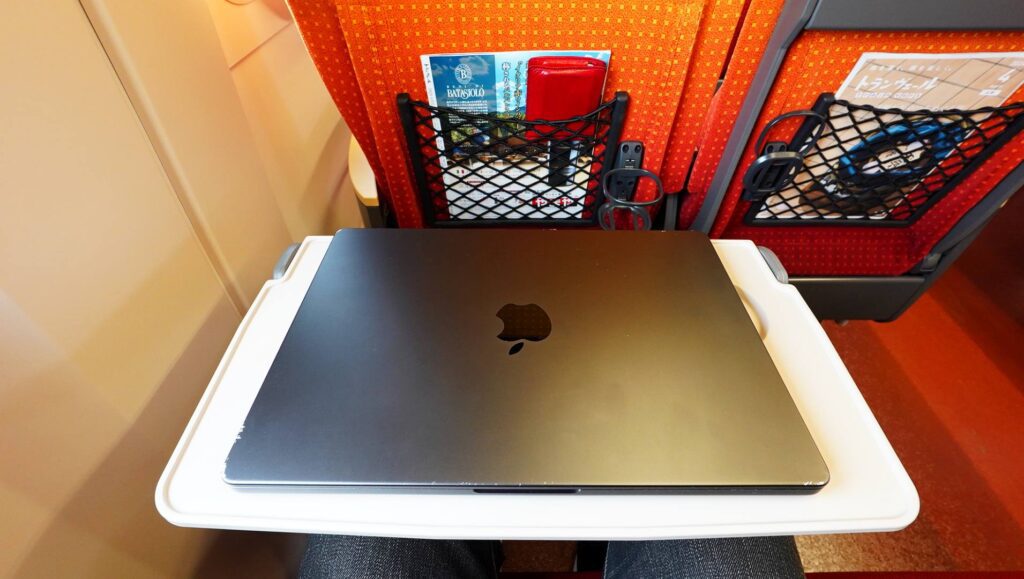
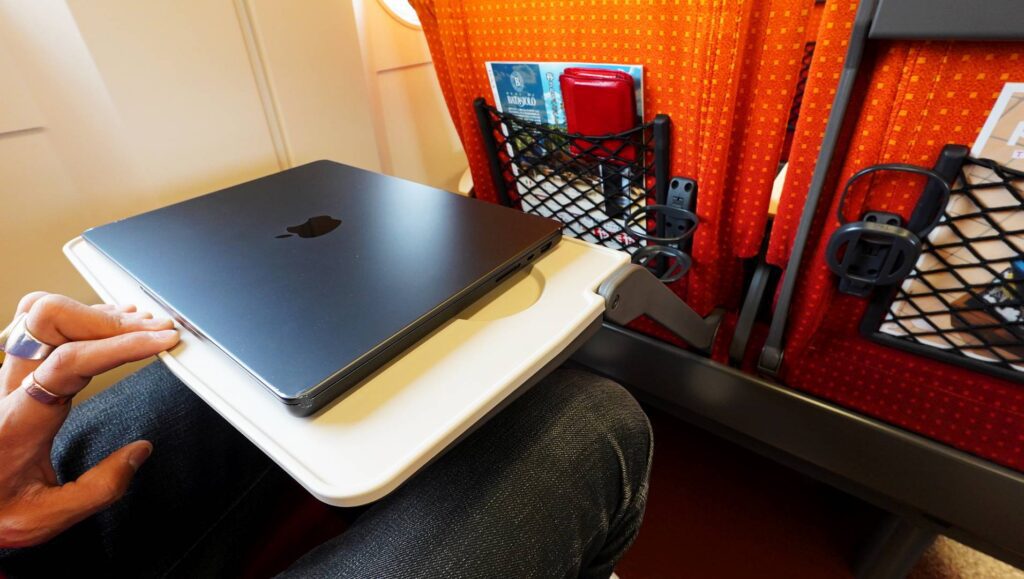
This table fits a Macbook Pro perfectly. However, there’s no room for a mouse.
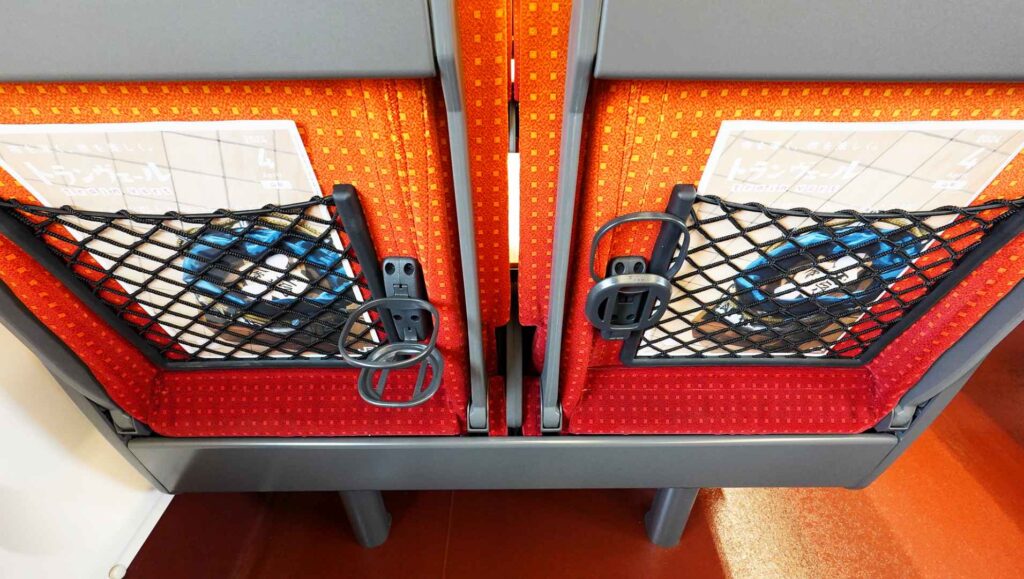
The seatback in front of your seat also has a standard fold-out drinks holder, as well as a mesh documents holder.

There’s two coat hooks along the window, between each window and just before the seat ahead.
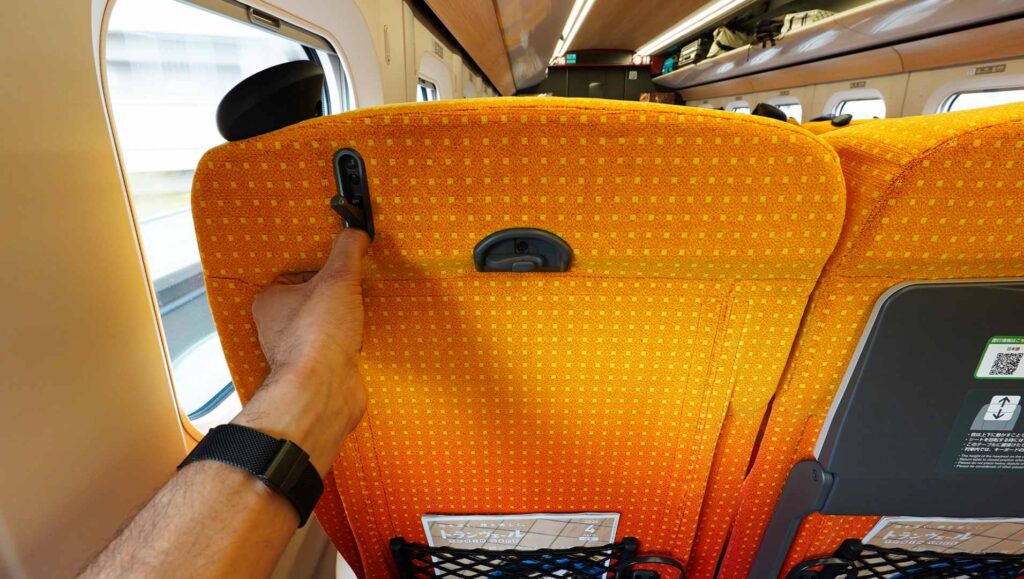
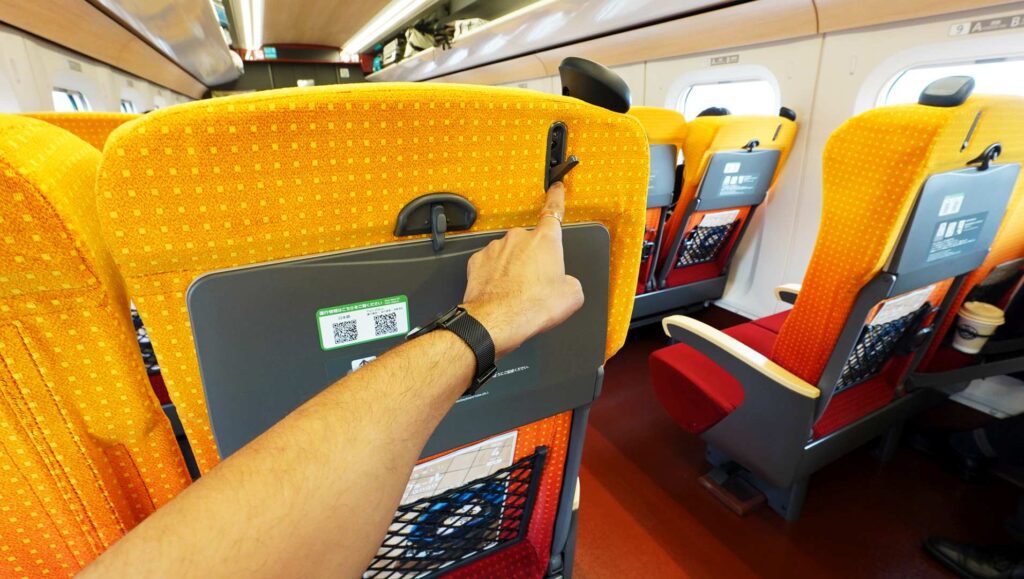
There’s also a coat hook in front of each seat, giving you two coat hooks per passenger.
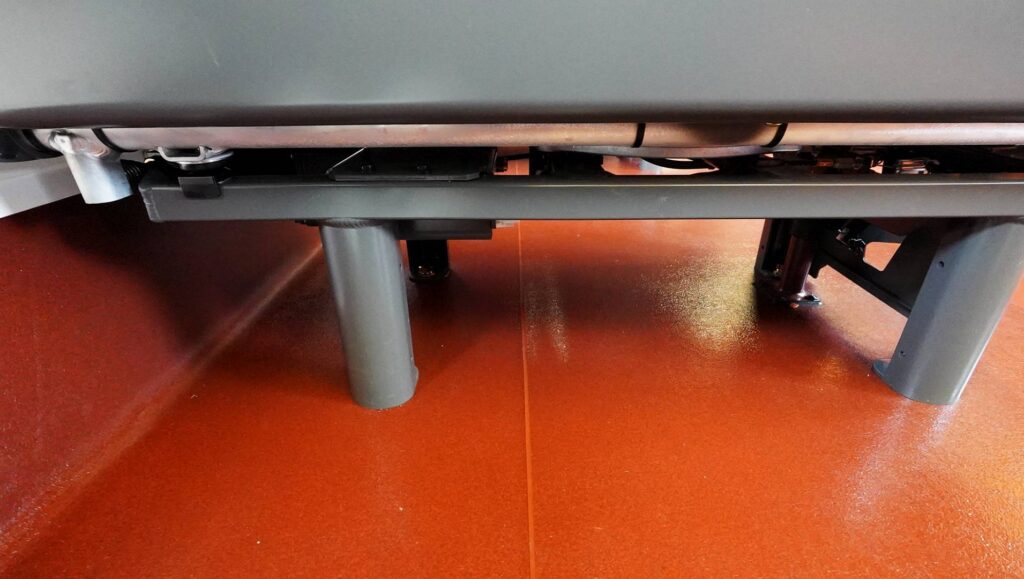
The floor here is an easily cleanable vinyl floor. There’s ample legroom and footspace, and also excellent underseat storage. However, there’s no footrest, nor is there a ottoman below your calves and feet.

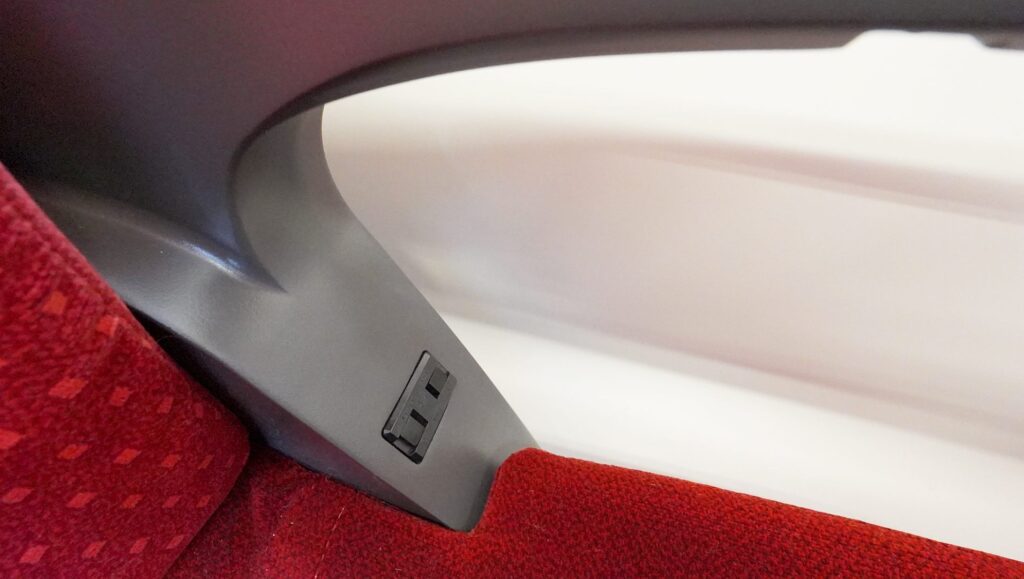
Each seat comes with an American style power port. These are cleverly placed below the fixed armrest – either adjacent to the window, or adjacent to the aisle. The space is large enough for Apple’s largest Macbook Pro chargers.
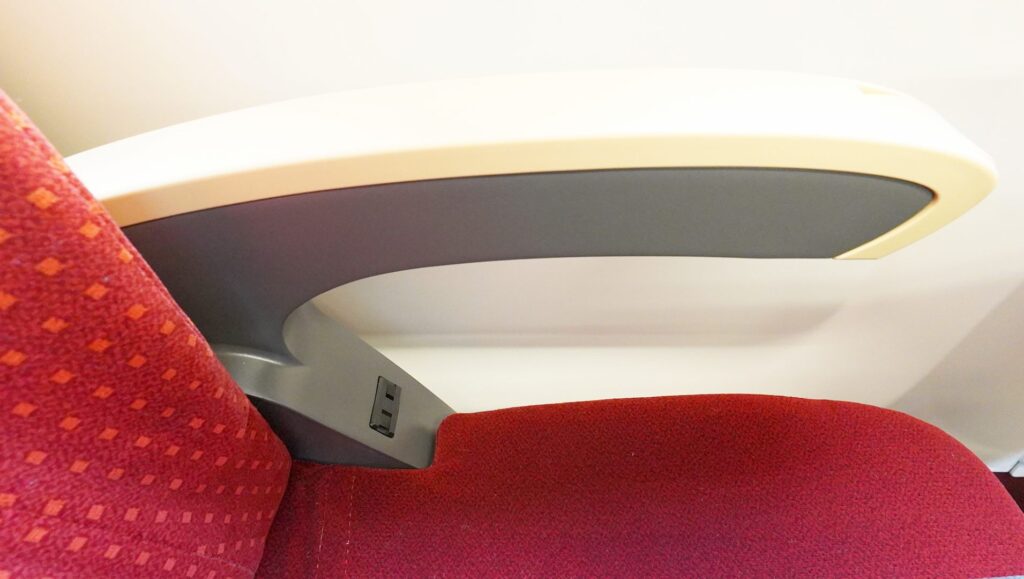
Against the fixed armrest is a release to recline the seat.

The windows are very large, a square-rectangular shape. One of my favorite parts of Shinkansen trains are that windows are perfectly aligned to each seat – so you never have to worry about losing the view if you select a window seat.
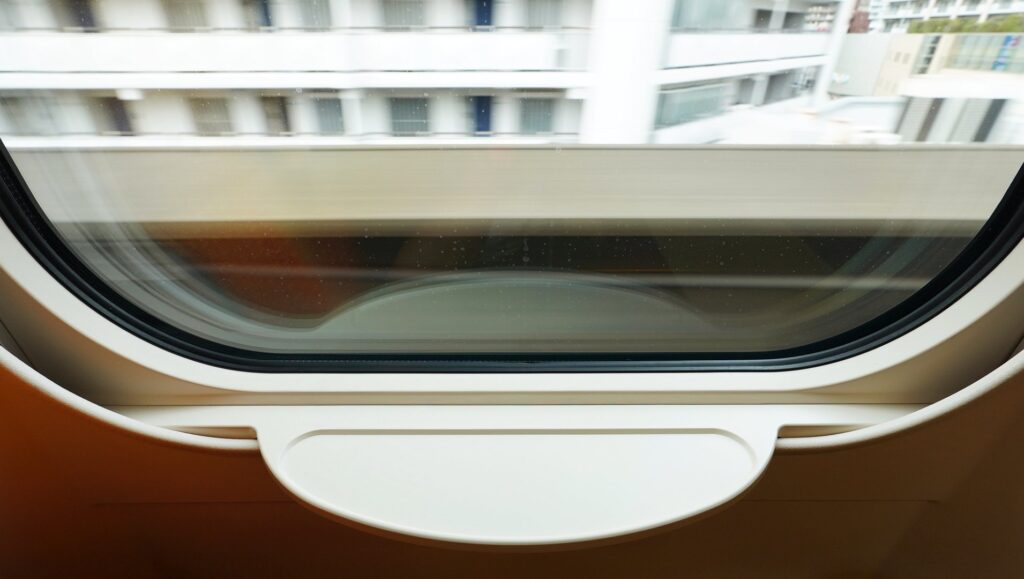
Each window also has a mini-counter drinks and phone holder. The shape is now modified into a semicircular arch, giving additional space for placing drinks and other items here.
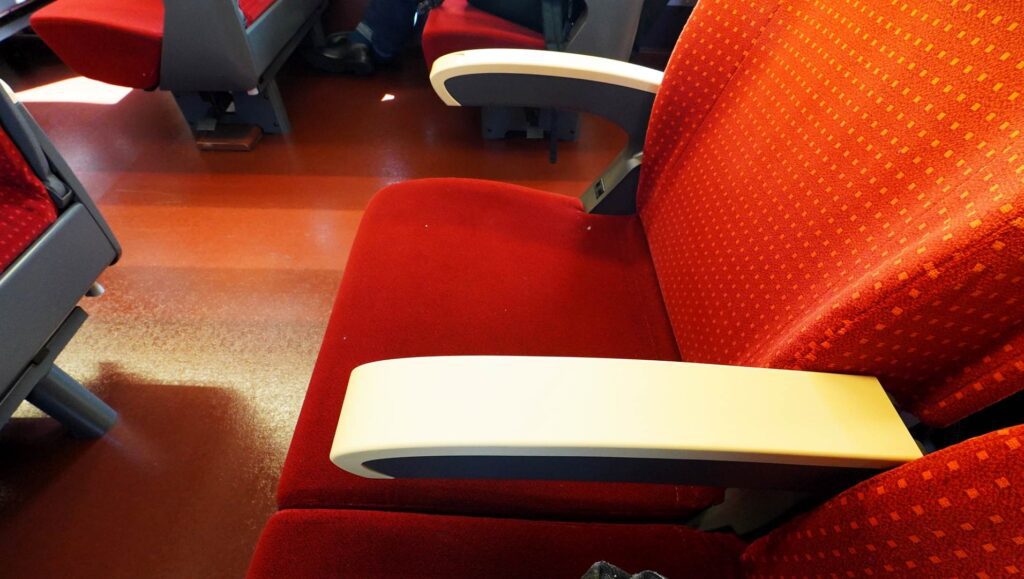
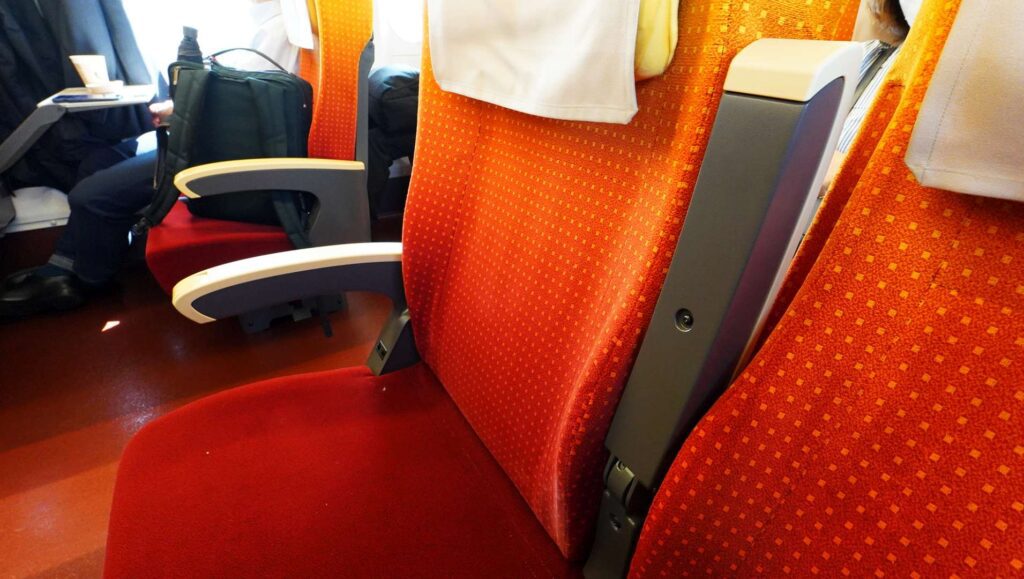
The middle armrest is plastic and very stable.

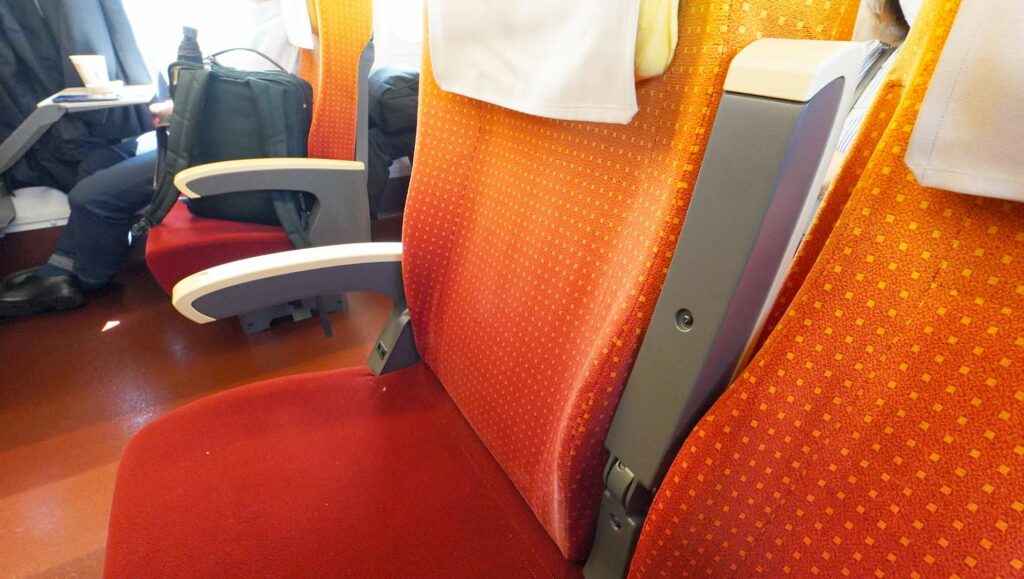
It can be moved up and out of the way, and insets in between the seats.
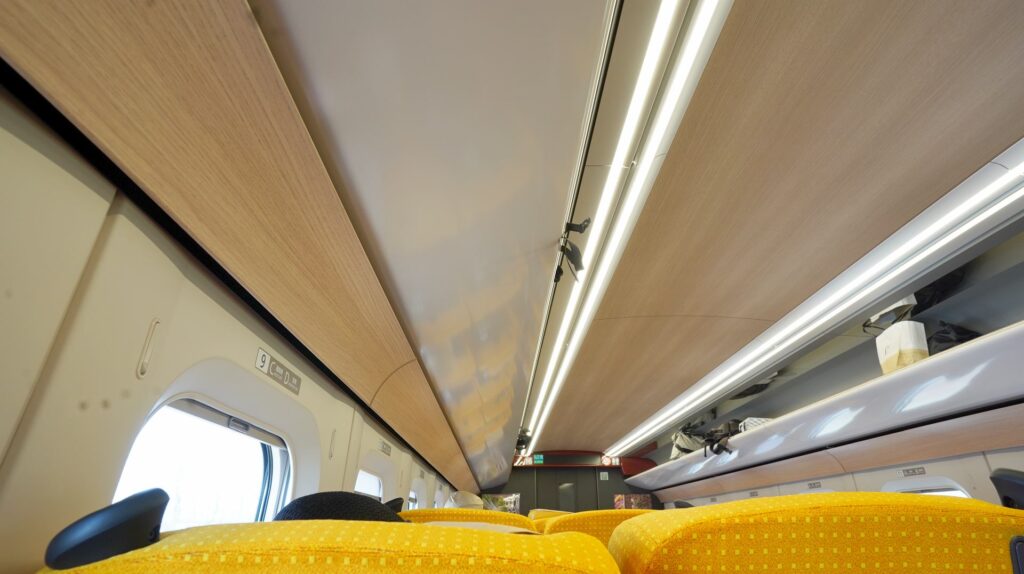
In economy class, there are no reading lights either at the seat, or overhead. There are no air vents here either.
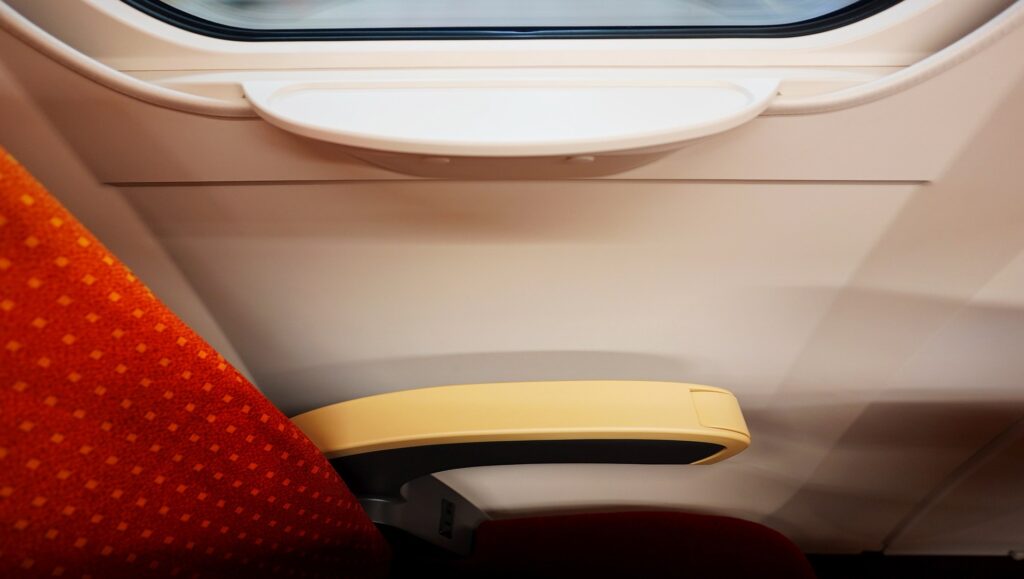
It’s worth noting along the window, the panels are slightly inset, giving you some more arm-space.
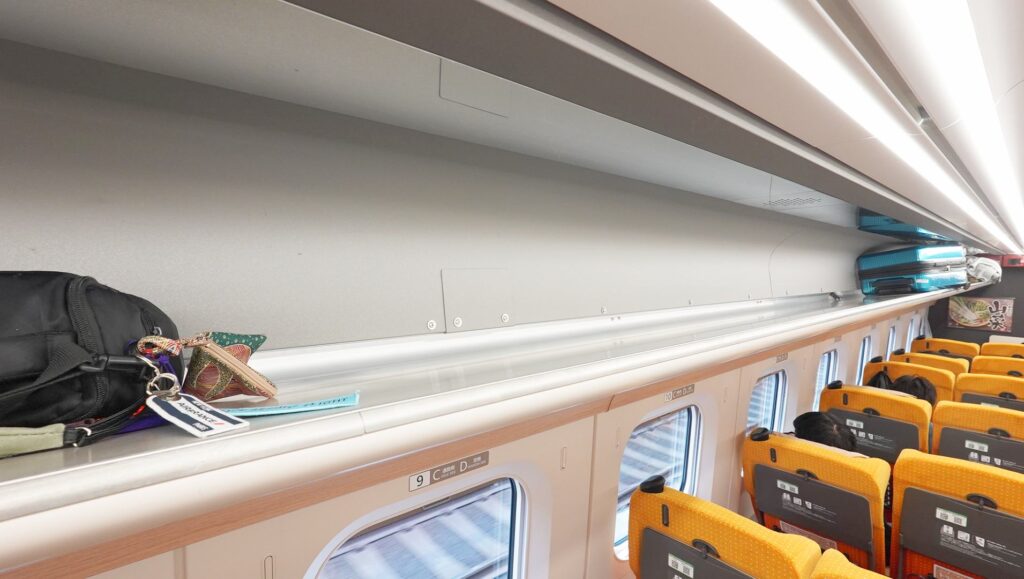
Above the seat are luggage racks.

In a very unique improvement, there’s reflective metal mirrors overhead, so you can actually use this to see what’s in the luggage rack – in case you forget or drop something here. Very clever!
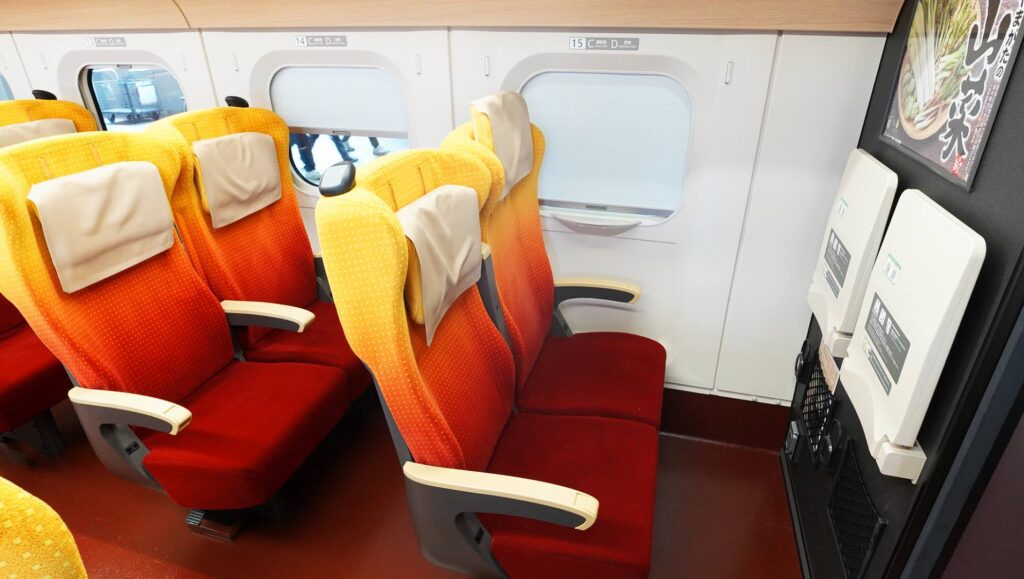
The very first seats on the train have the tables on the wall, and so they are extra long.
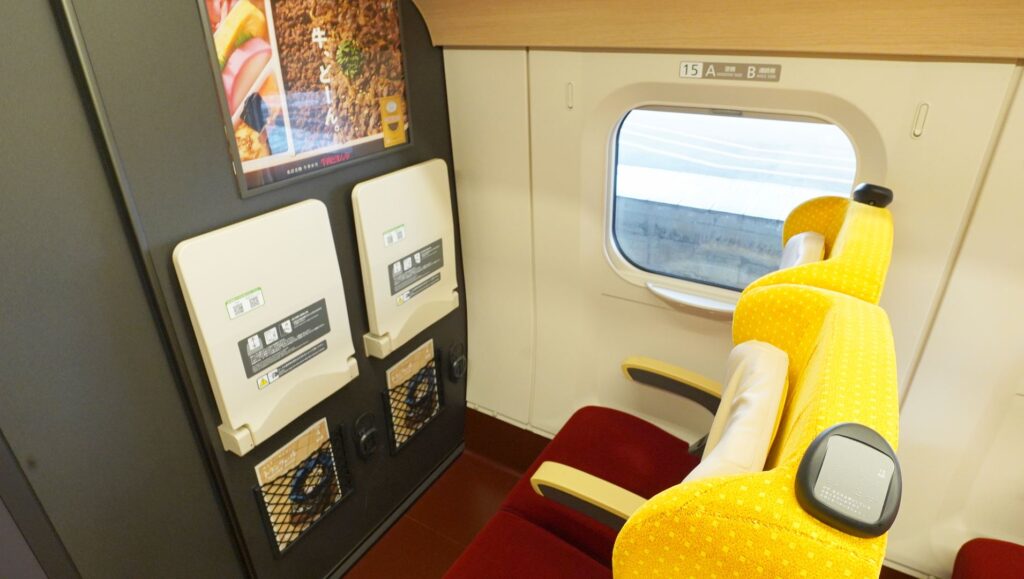
Overall, the economy class seats are extremely comfortable – honestly, they’re perfectly fine for a long journey on this line. I was on my train for three hours and didn’t regret choosing Economy Class over Green Class on the Northbound run. On the Southbound run, I tried Green Class, posted here in a separate review.
Restrooms (Standard Class)
In between Cars 16 and 17 were the restrooms I explored.
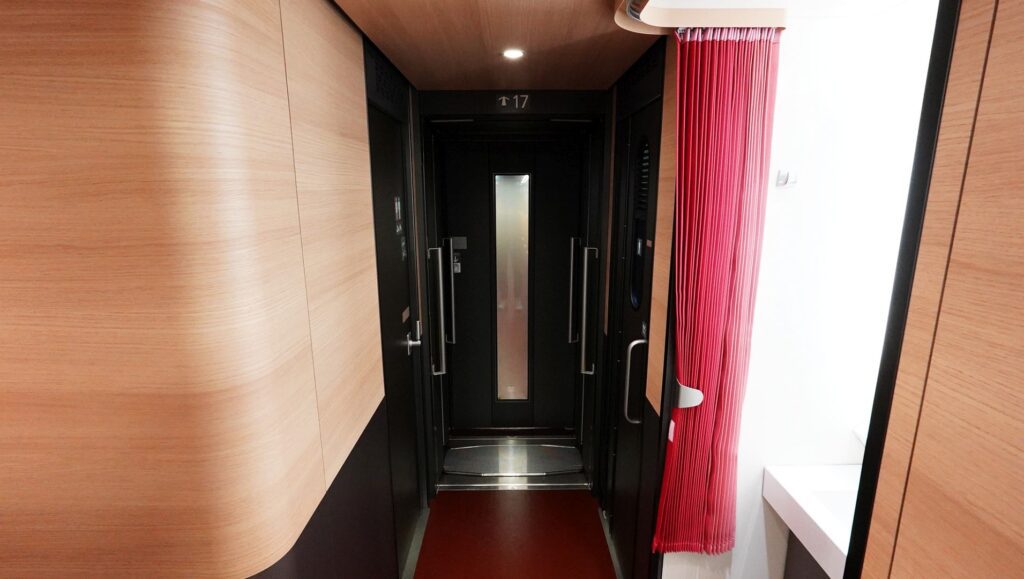
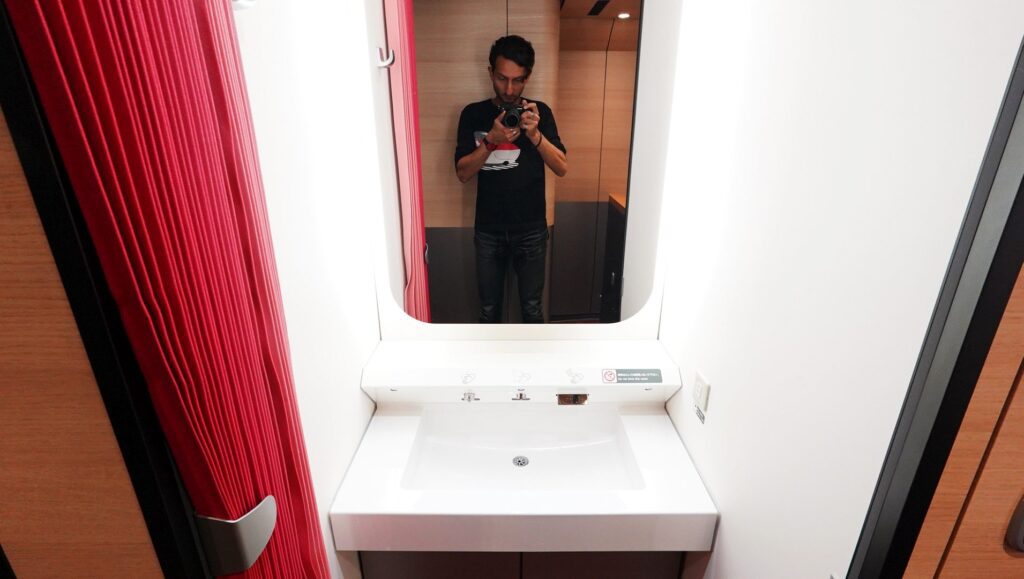
Like on most Shinkansen trains, there’s a shared sink here that also has a large backlit mirror.
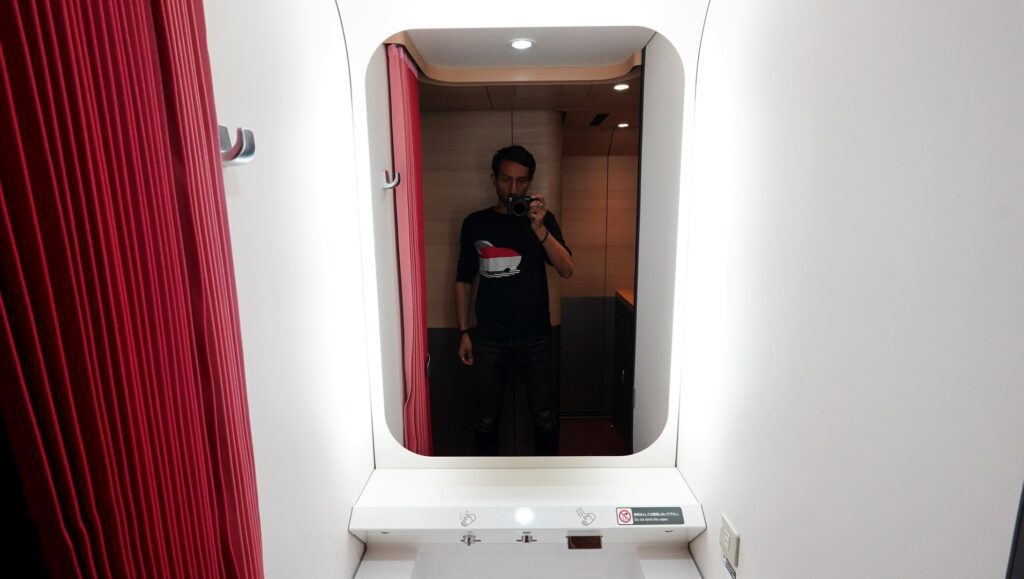
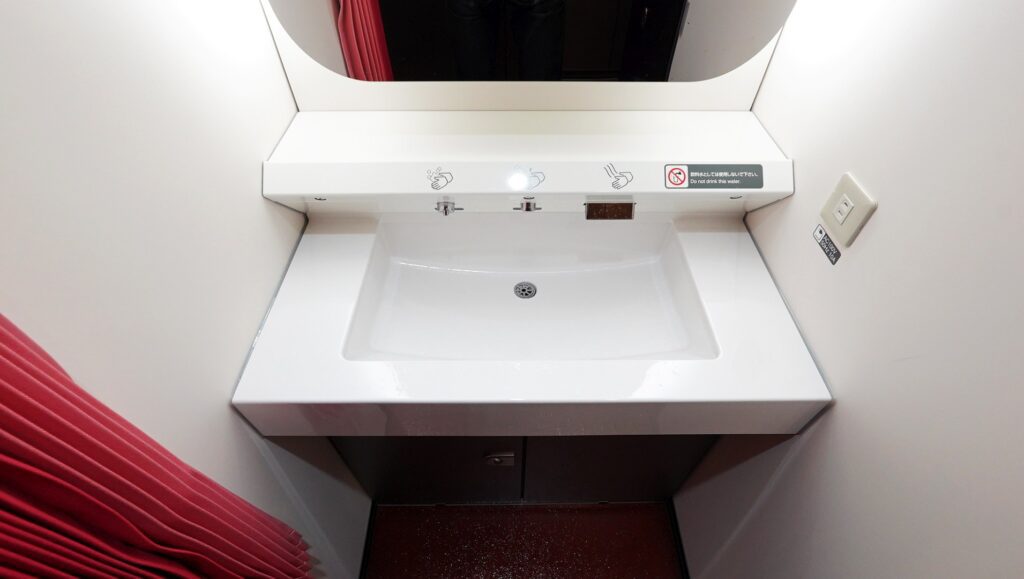
This is fully accessible, although there’s also a curtain here if you need some privacy.
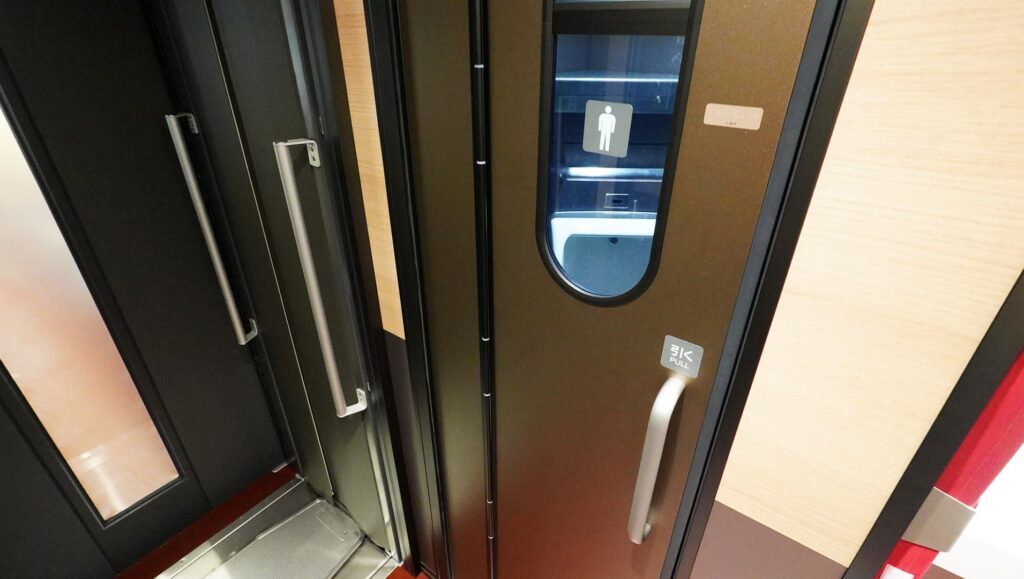
To the left of this, there’s a door that’s exclusively for the men’s urinal.
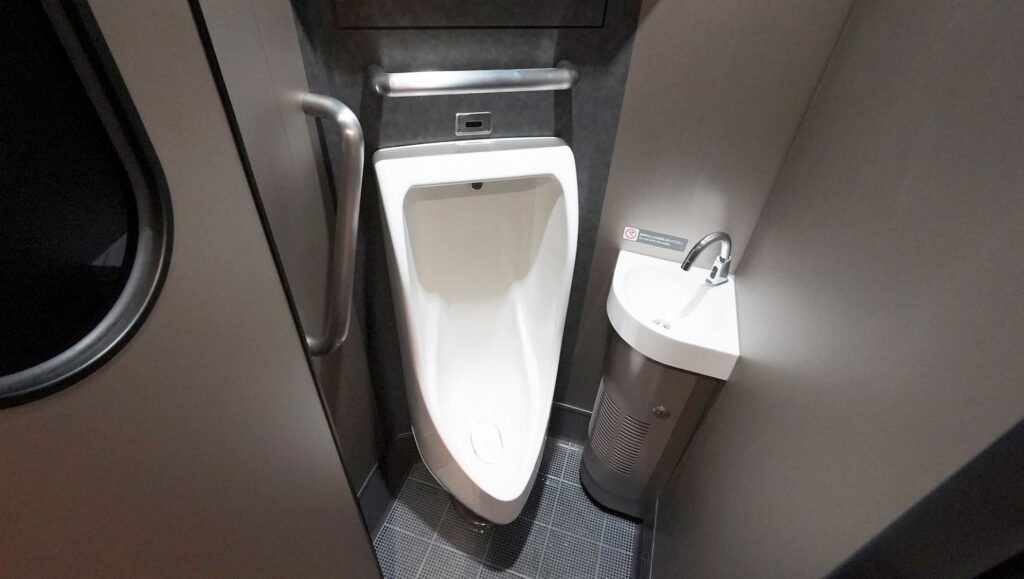
This is a tall urinal along the side corner with an automatic flush.
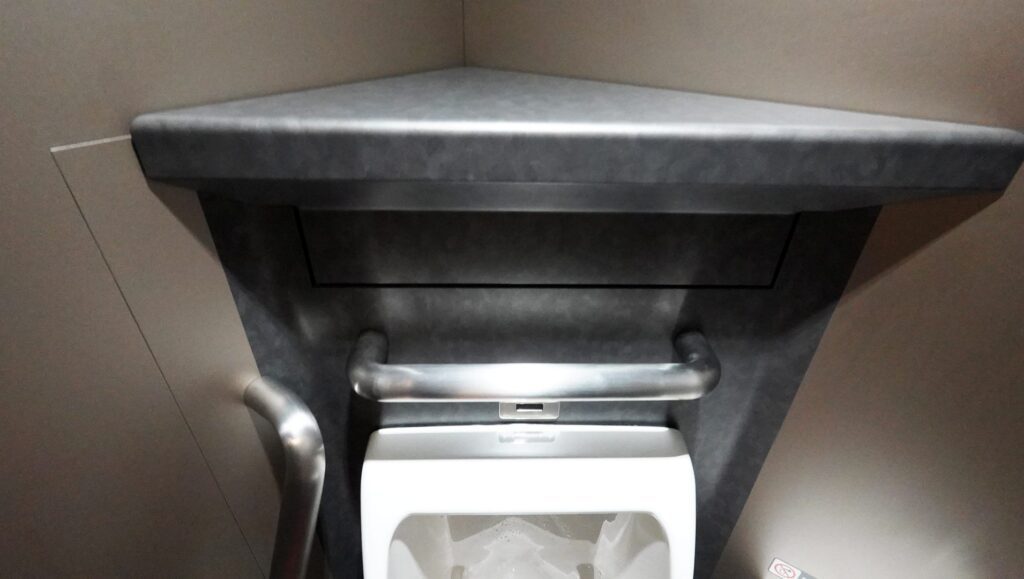
Above the urinal is a small triangular counter to put belongings on.
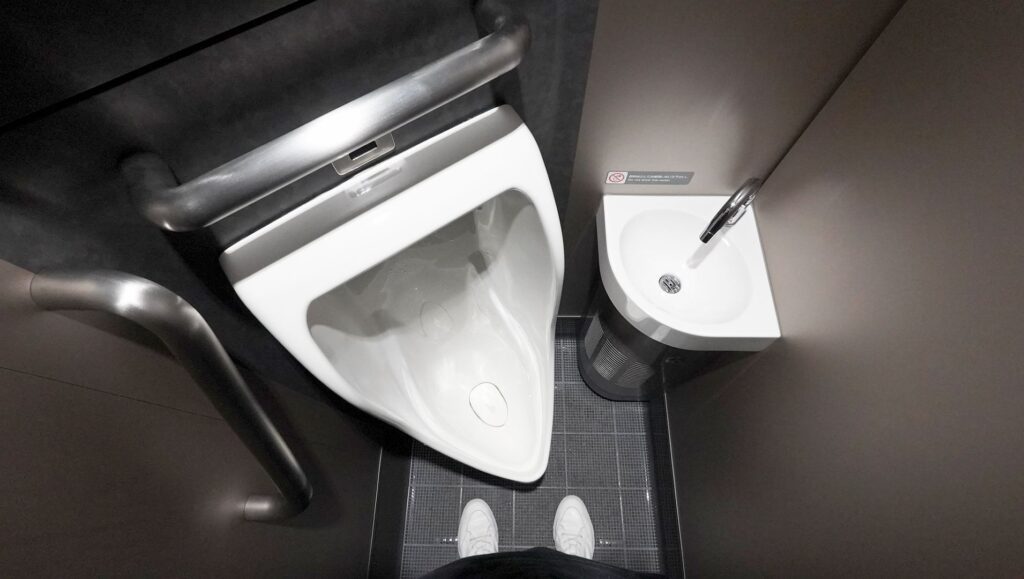
To the right of this is a small mini-sink for washing your hands.

Across from the urinal area is another door that leads to the main restroom.

This is a standard sized restroom that also has an automatic full-sized Toto toilet.

The toilet is regular sized and also has a full set of controls for operation, like in most Japanese trains.
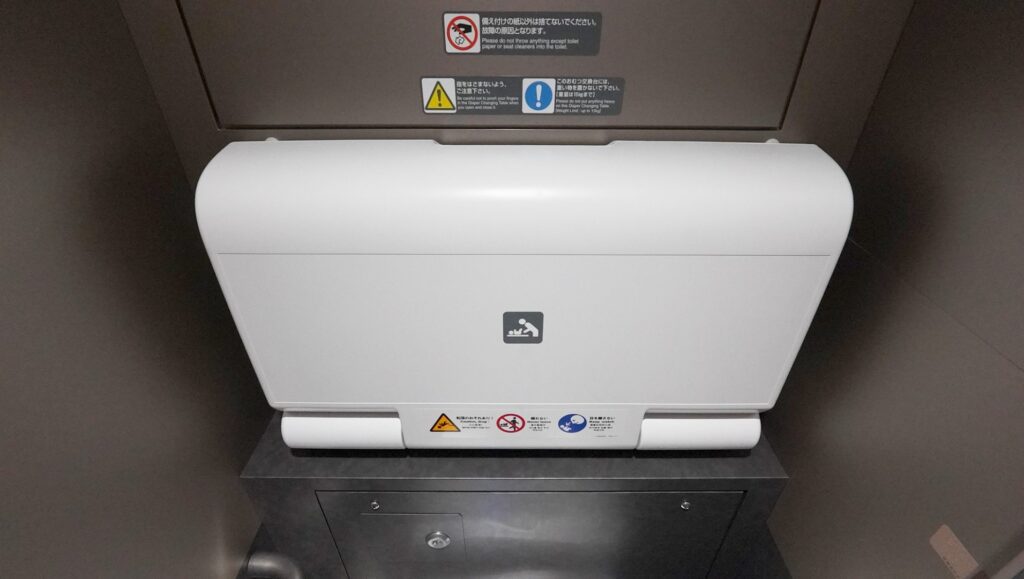

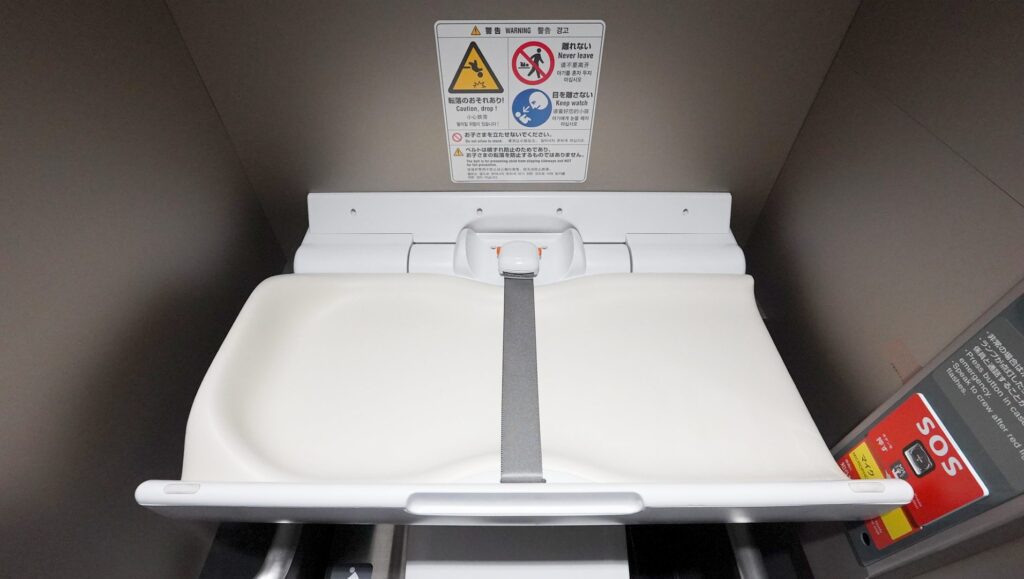
Above the toilet is a large, bulky baby-changing station, which you can pull down. This is well padded and also includes a belt to secure belongings or a child.

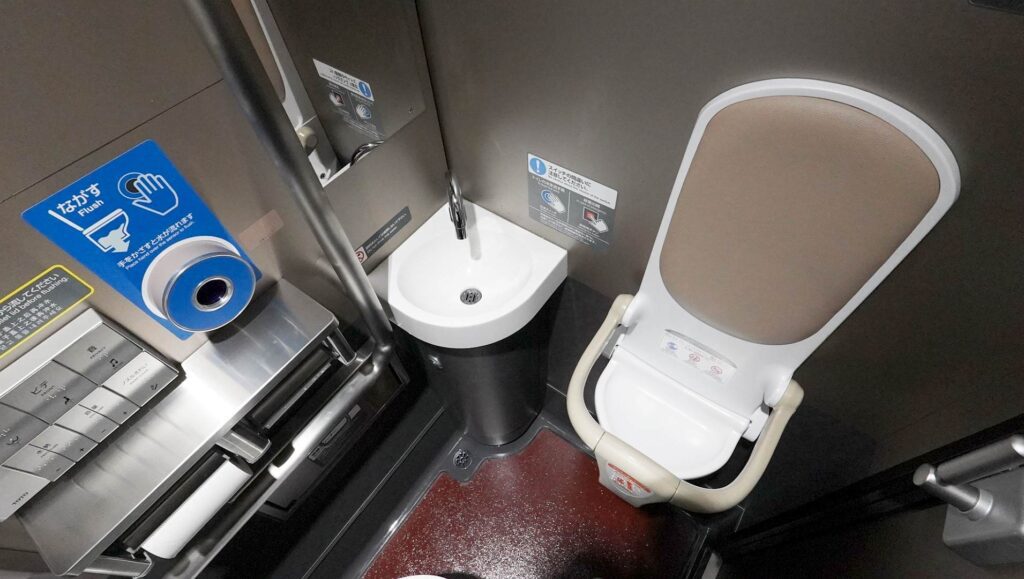
On the side by the door, there’s also a baby-seat where you can seat a small child on the side of the wall.
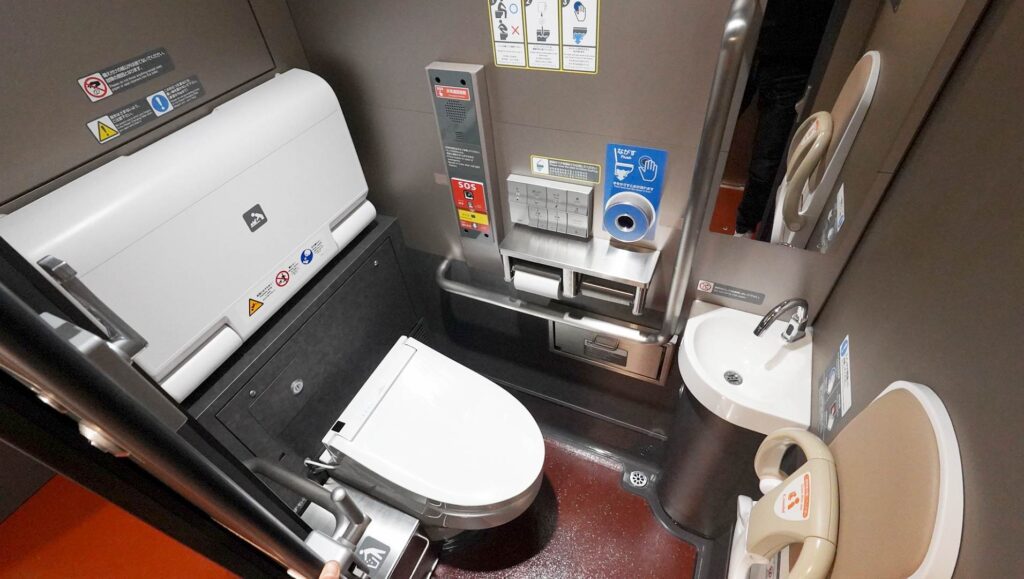
Additionally, there’s a small circular sink here along the corner, operated by motion detection. There’s also a very small facial mirror along one wall.
The lighting in this space is quite sharp yet dim, and reminds me a lot of the restrooms on the Delta Airlines A321neo.
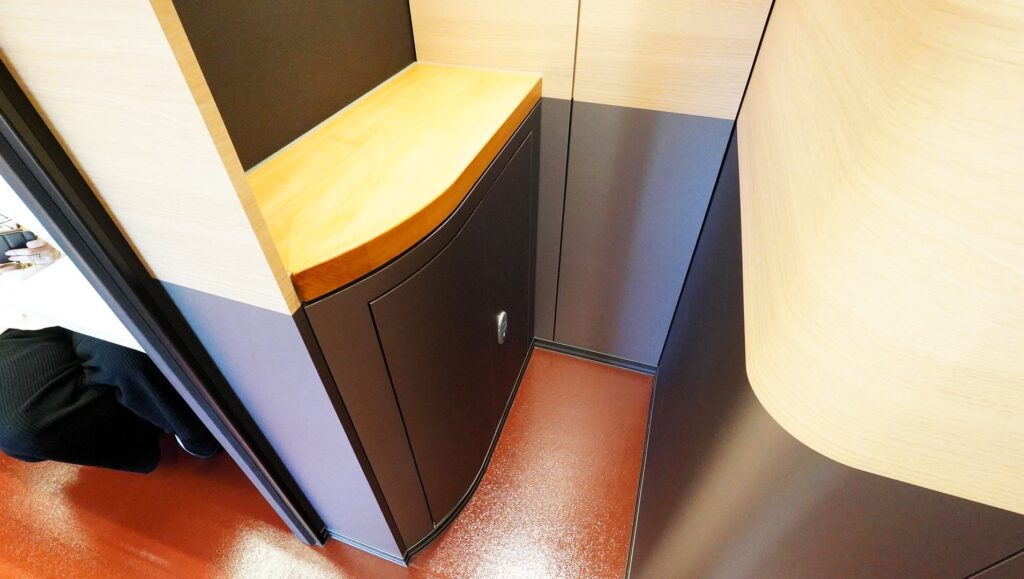
There’s also a small vestibule area on the side where there’s a counter-table for taking care of other items.
The Ride on the Series E8 Shinkansen
I took this train on a Monday round trip between Tokyo and Shinjo. On the way up, I tried Standard Class, and on the return trip I took the Green Car (which I’ve reviewed separately). I think the Standard Car was arguably more comfortable than the Green Car – surprise!
Getting To The Train
Getting to the train was an intense experience – I navigated thru the wildest foot traffic I’ve ever seen at Tokyo station.
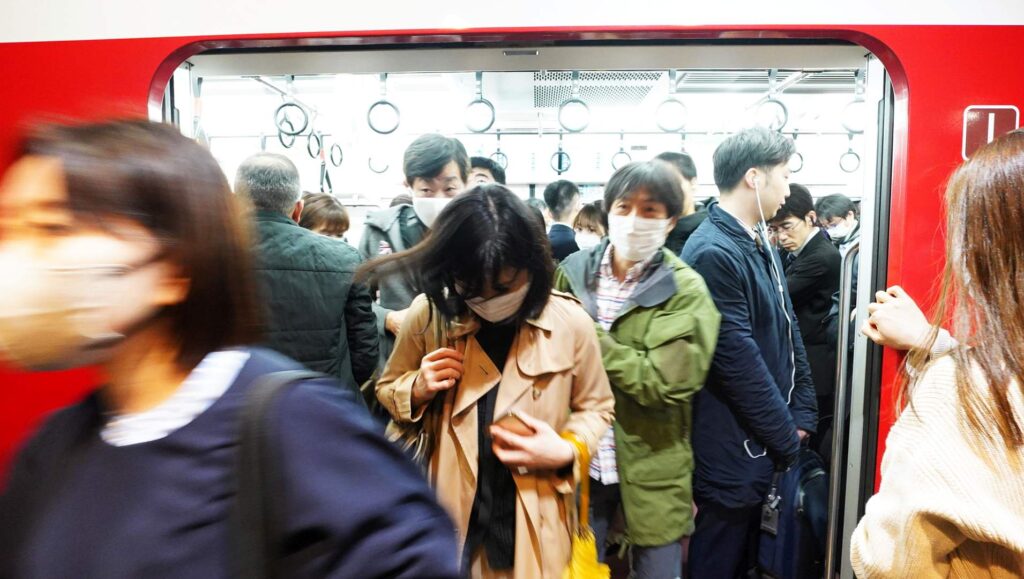
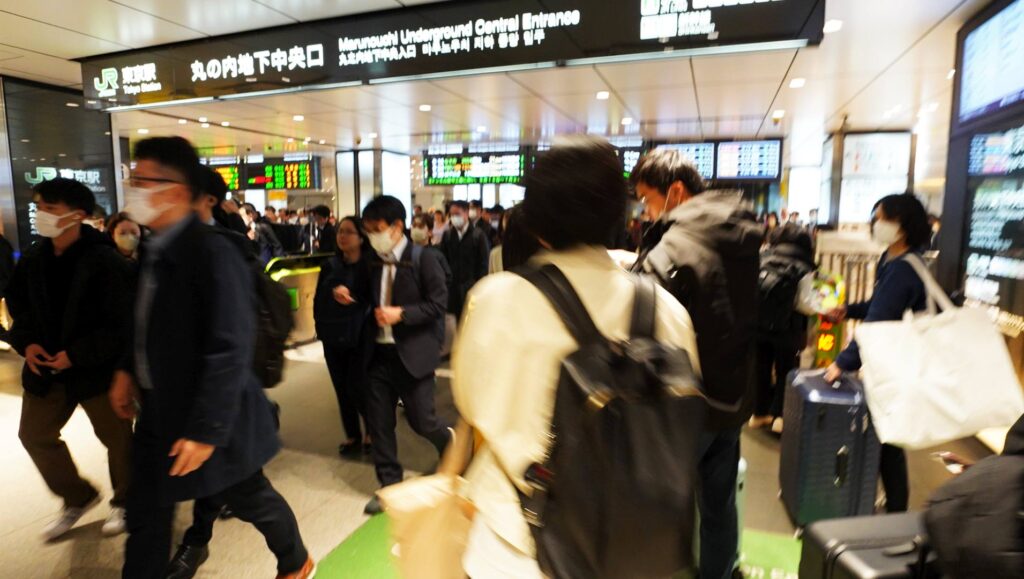
My train, number 131, was showing an on time departure of 9:24am on Track 22.

It’s honestly very difficult to navigate from the Otemachi Red Line station.
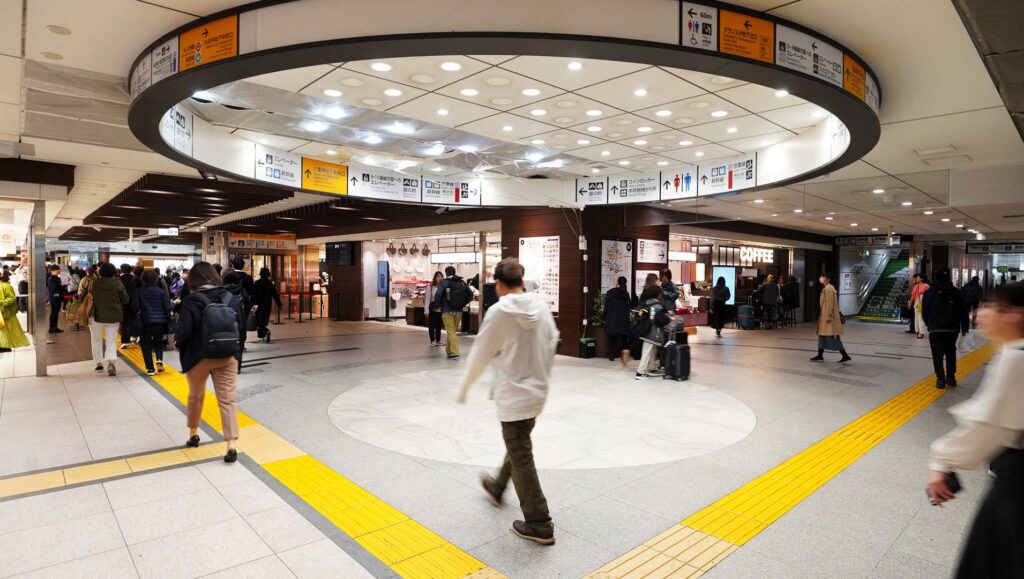
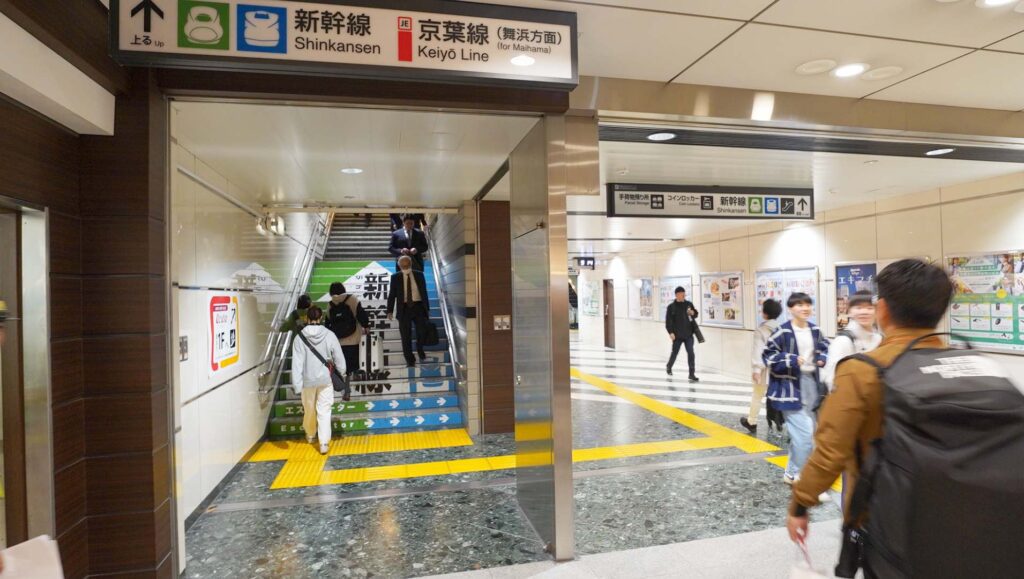
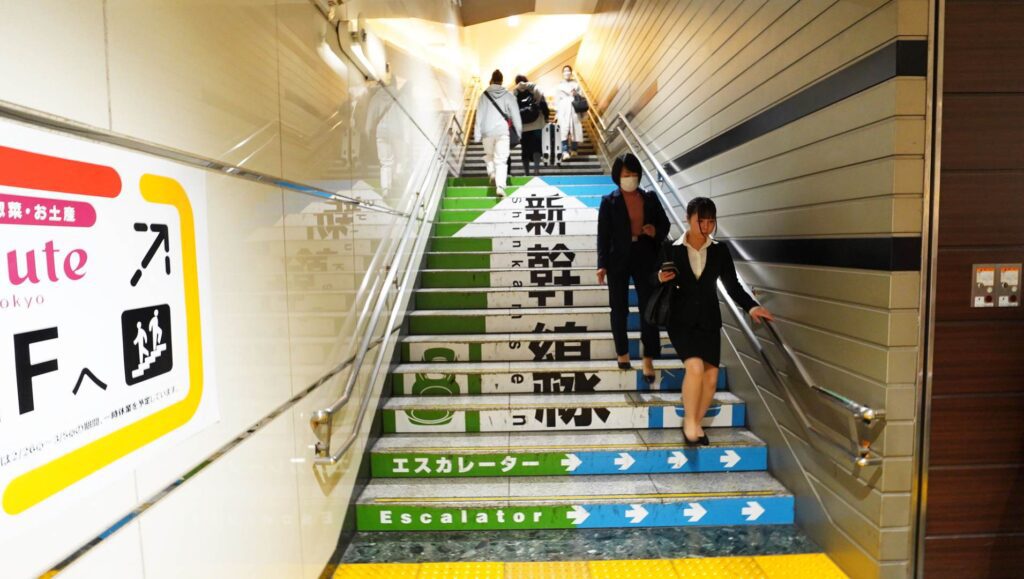
Eventually you’re come to a circular roof junction, and then you’ll need to follow the steps up to the main Shinkansen concourses.

I much prefer entering the station by taxi at one of the North entrances into Tokyo Station.
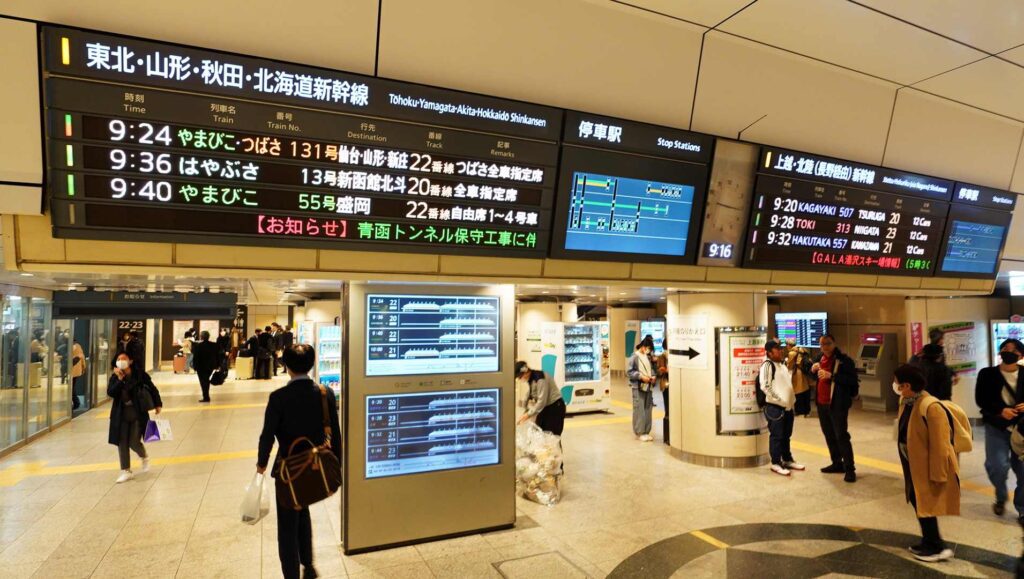
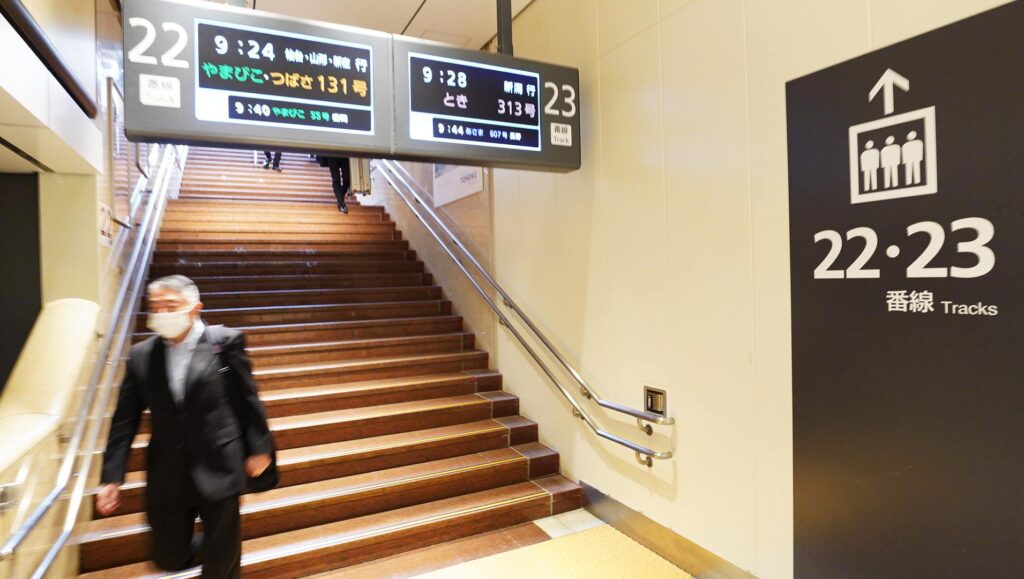
The train was waiting on track 22, attached to the Tohoku Series E5 Shinkansen bound for Sendai.
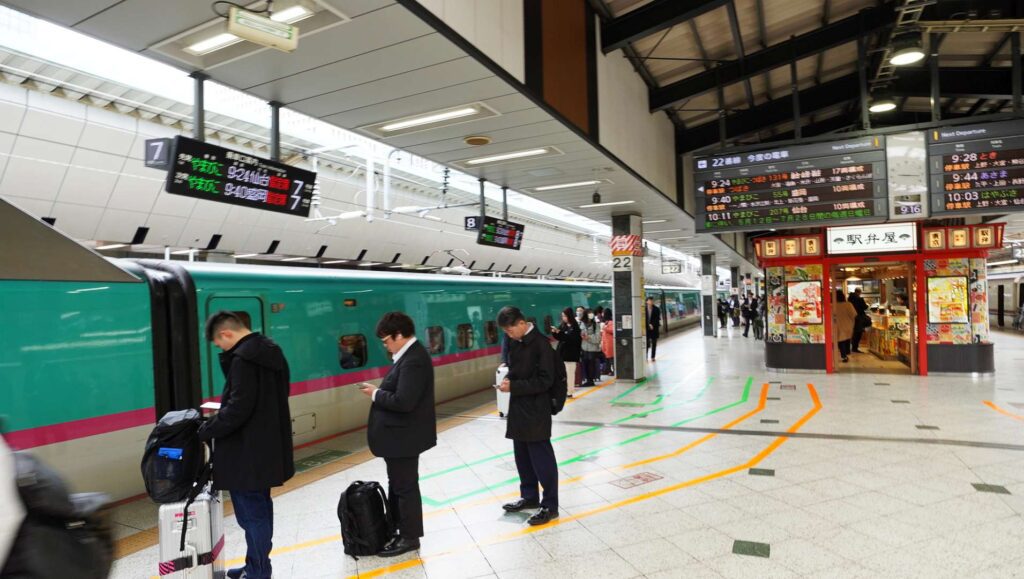

That’s when I saw the sexy, Series E8 train wrapping around the corner.

I walked all the way to the opposite side of the train, to get the views
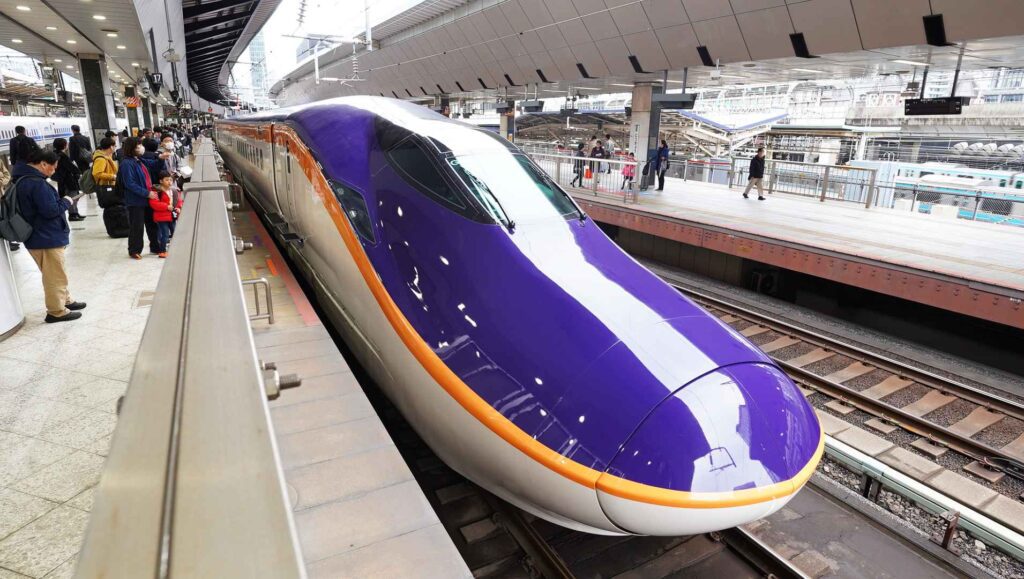
I then entered in thru Car 17, and was seated in Car 16.
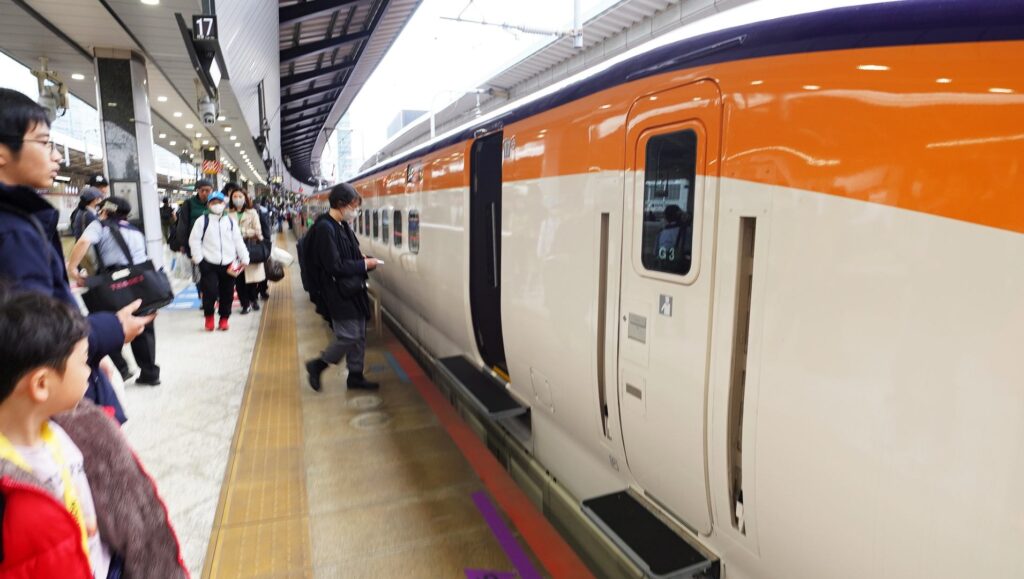
The Ride from Tokyo to Shinjo
We left exactly on time, and stopped at Ueno station in Tokyo, and Omiya station in Saitama, before making a non-stop run northbound for Fukishima.
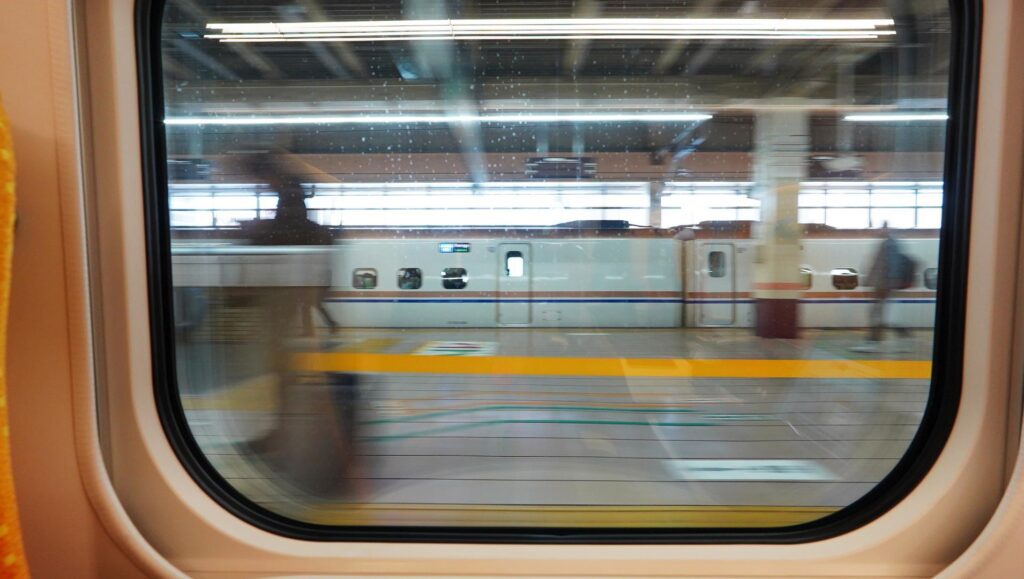
This train goes so fast!
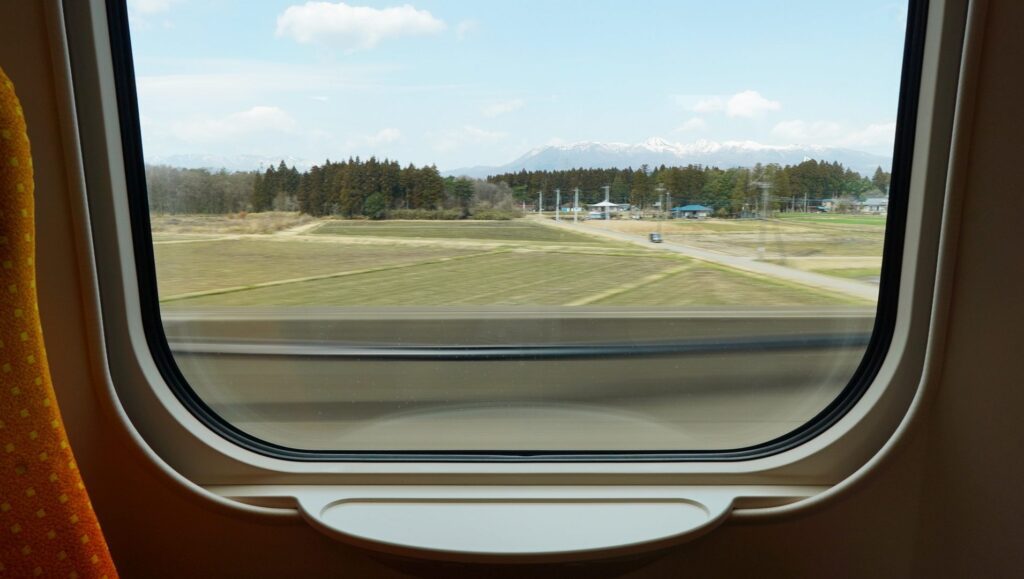
At a 186mph operating speed, it most reminds me of the LGV Est line between Paris and Strasbourg France, where I’ve taken both the TGV and ICE services.
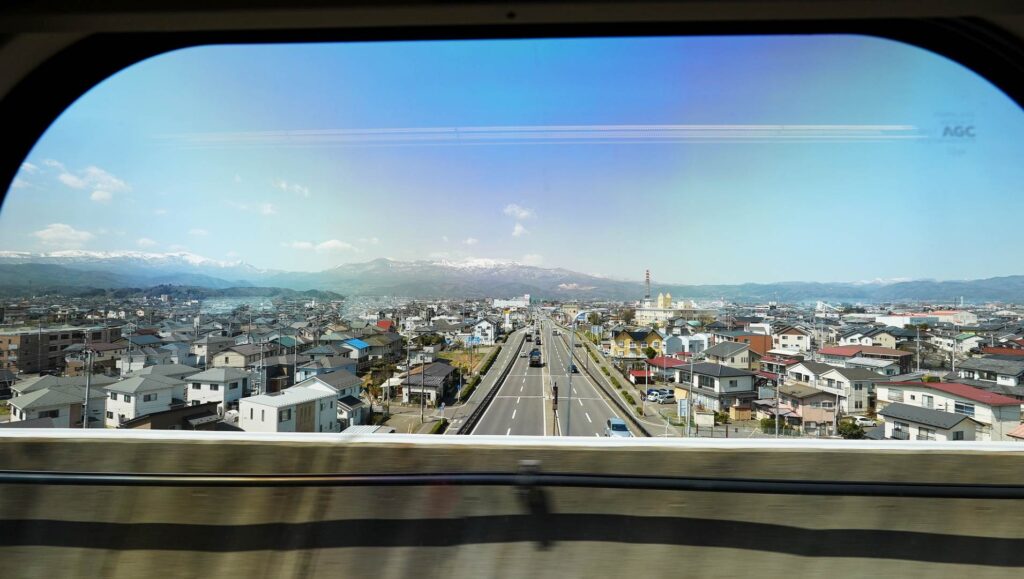
We had a non-stop run all the way from Omiya station in Saitama, thru to Fukushima further north on the line.
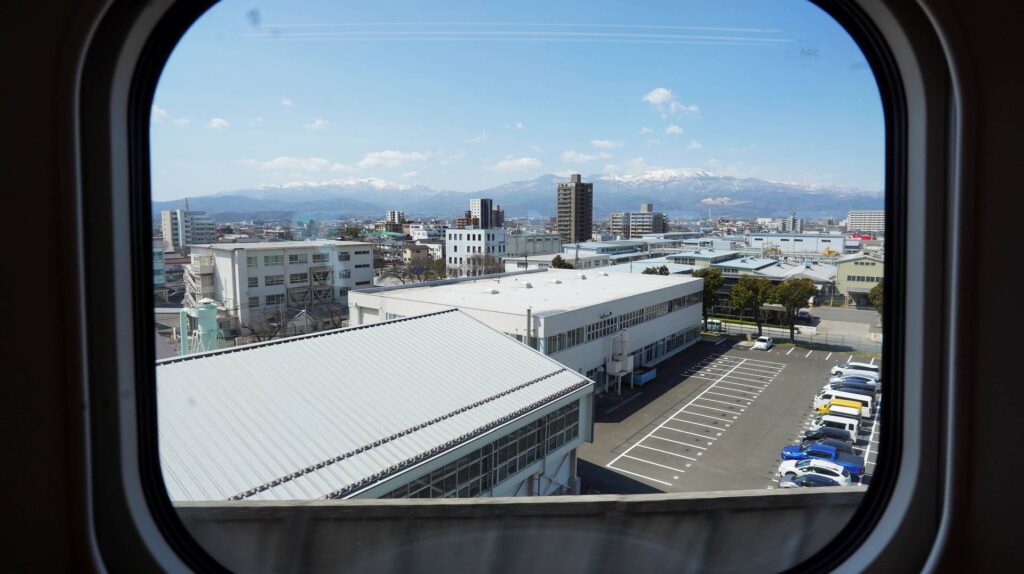
At Fukushima, the trains are separated between the Tohoku service that continues to Sendai, operated on the Series E5 trains, and the Tsubaru service that continues to Yamagata on either the E3 or E8 series.

The most scenic view is just south of Fukushima looking west (on the left side of the train if going North, and on the right side if going South). Here the line is elevated as it pulls into Fukushima, and you get awesome views of the city in the foreground and the mountains in the distance.
The separation of the trains takes less than two minutes, and shortly after we were again on our way. I’m always amazed at the railway efficiency in Japan, which is really something Americans and even Europeans can learn from.
After Fukushima, our train departs ahead of the Tohoku service and turns to the left, headed straight for the massive mountains west of Fukushima.
Here, the train is much slower, and it slowly climbs up the mountain and into the river valley alongside a river. Soon we were also crossing past unmelted snow – this line gets many feet of snow during the winter, which the train is designed to cut thru.
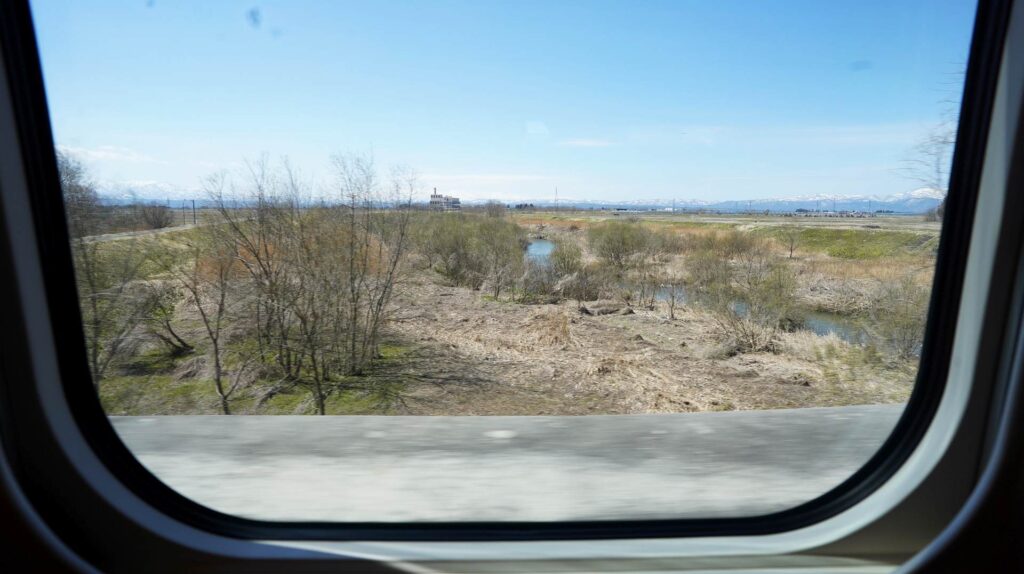
The route takes almost 45-50 minutes to navigate thru the mountain pass. Then, we arrive in Yonezawa in the Yamagata valley. After a brief stop at Yonezawa, the train runs faster once again on this line’s 130km/h operating speed. This time, there are mountains on both the East and the West sides.
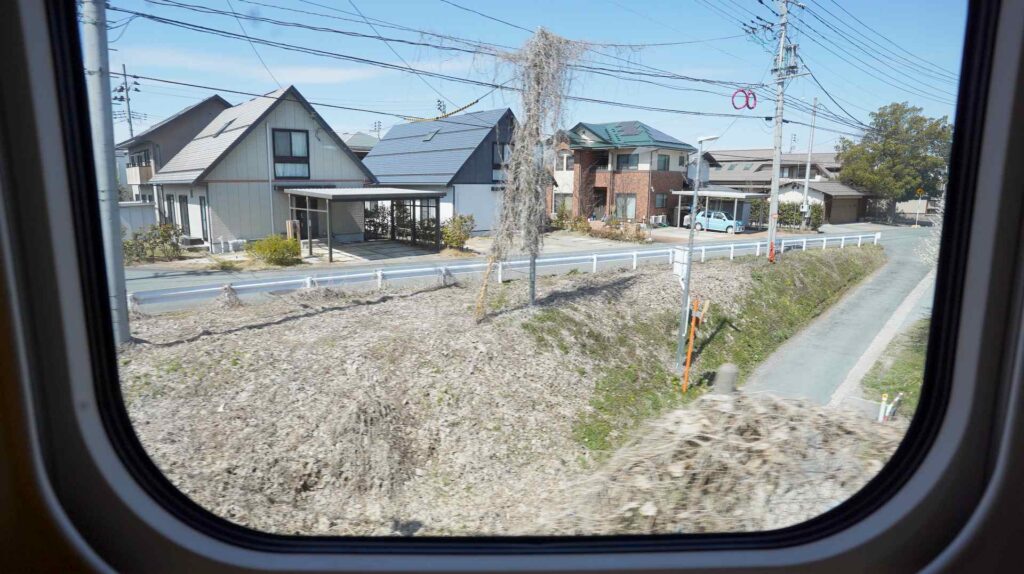
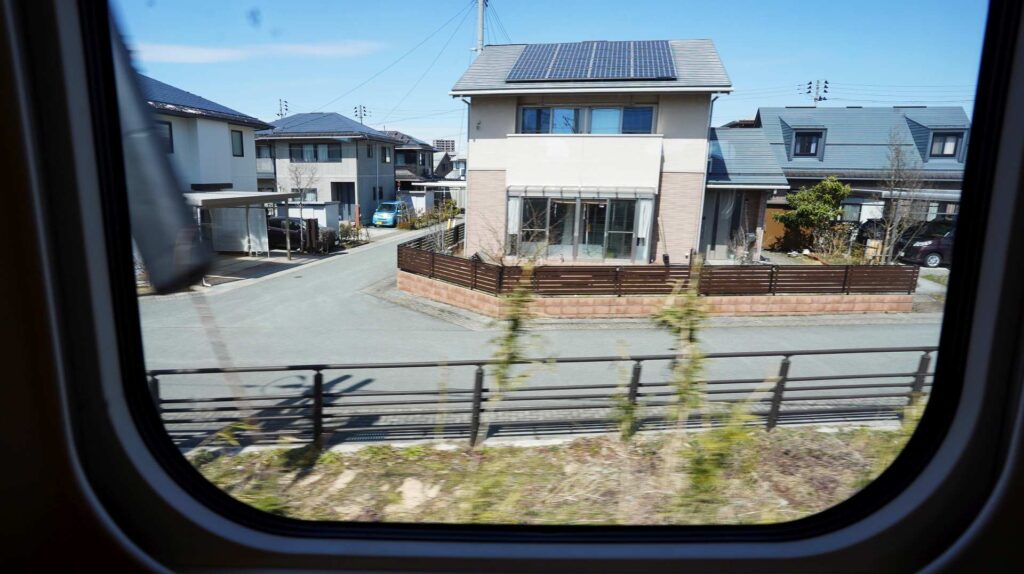
After Yonezawa and especially Yamagata, the train began making many local stops. Effectively, this means the train runs express all the way from the Tokyo area, to Fukushima, and Yonezawa, followed by full coverage of the area north of Yamagata.
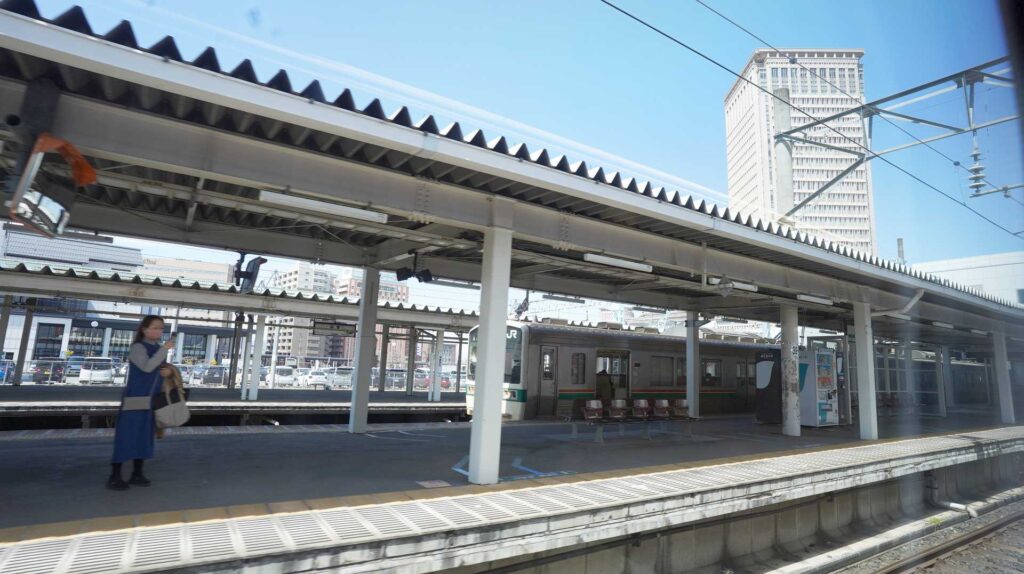

Most passengers exited the train at Yamagata and the stops beyond.

We wound thru many smaller mountain passes and valleys on the line north to Shinjo, which is also single track but reasonably fast.
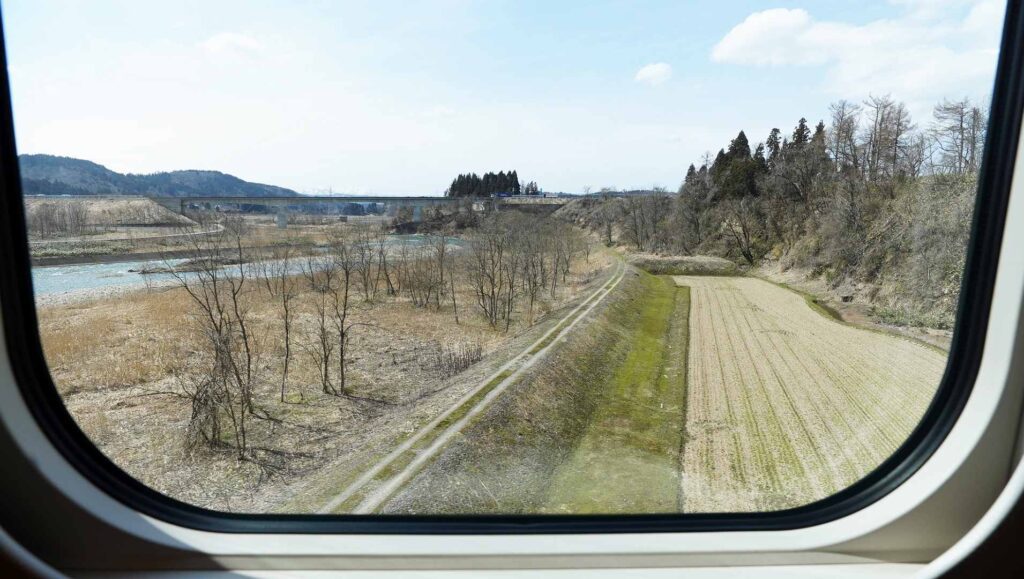
The local stops were sometimes completed in as little as 15 to 20 seconds, another mark of Japanese efficiency on the Shinkansen.
WiFi (Northbound)
I connected to the WiFi network on both runs. On the Southbound run, I also connected with my phone.
The easiest option for most will simply be to enter in your email address; a temporary connection is granted for ten minutes, and then you click a link on the email issued to that address to complete the connection.
I thought the WiFi was both very stable, and the speeds were pretty fast on the Northbound run. Google Maps pulled up easily, as did sending videos on Telegram. Granted, my car was only about 50% occupied – perhaps this contributed to the higher speeds than on the southbound run in the Green Car.
Service on the Series E8 Shinkansen
On the three hour run to Shinjo, an attendant brought a cart for service down the aisle about four times.
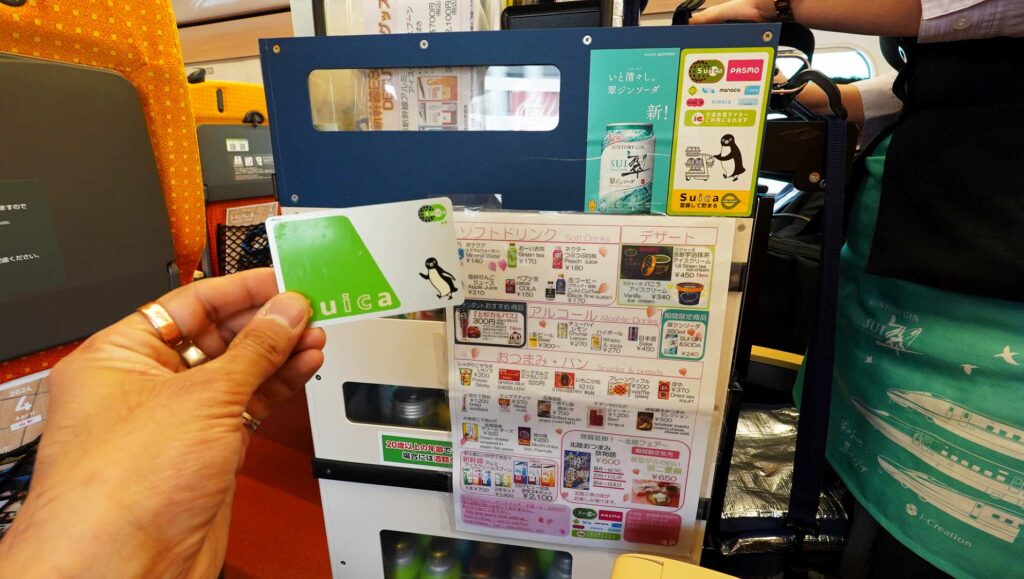
At first I thought, per a Japanese explanation and my limited understanding of Japanese, that payment can only be made using IC cards (like a Suica card).

However, on my second and third order I discovered that you can also pay in both cash as well as card.
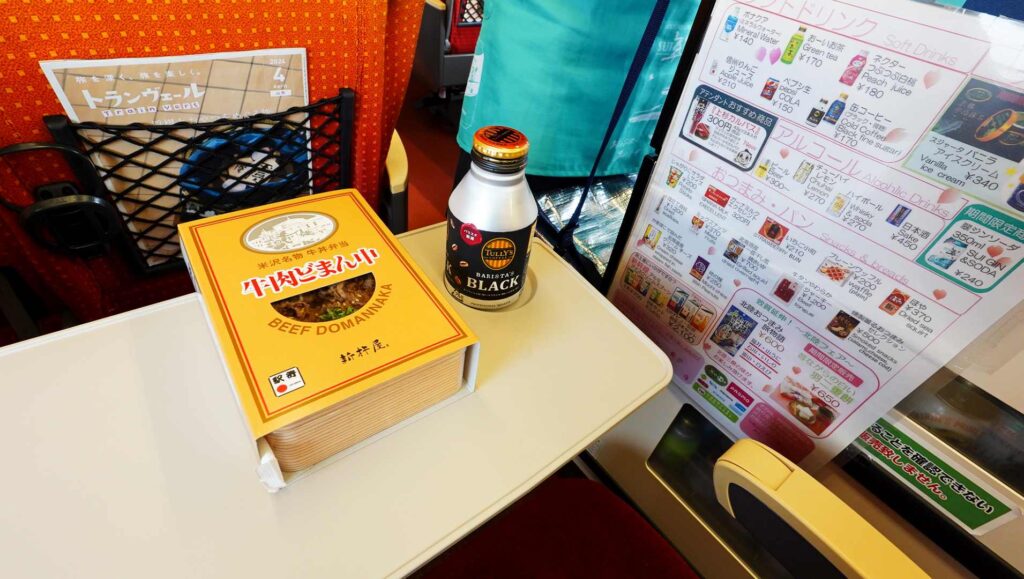
One thing that is NOT available on this train is hot coffee, unfortunately. That’s definitely disappointing, but at least they still offer bottled ice coffee.
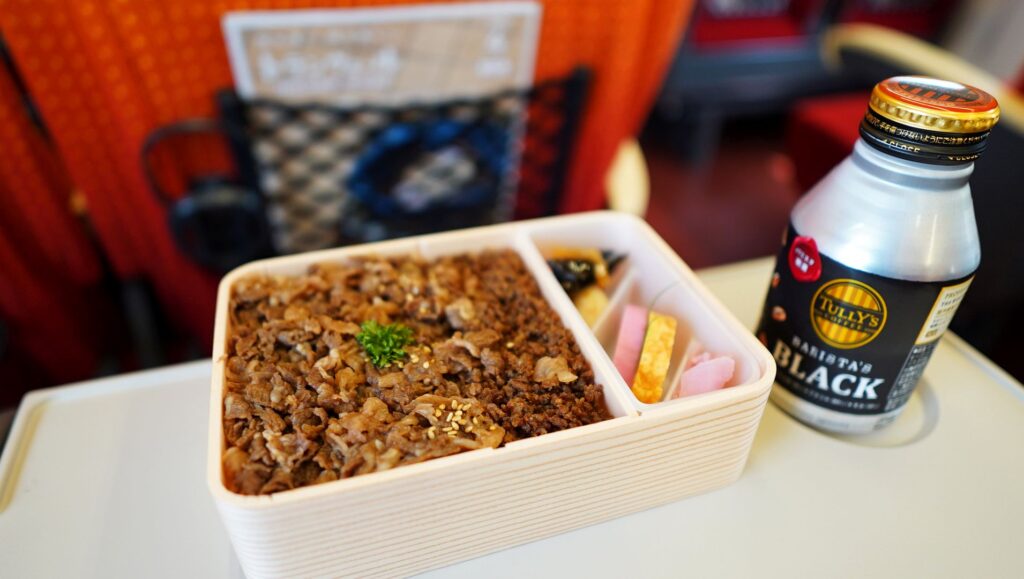
I had a Bento Box with beef on this train.
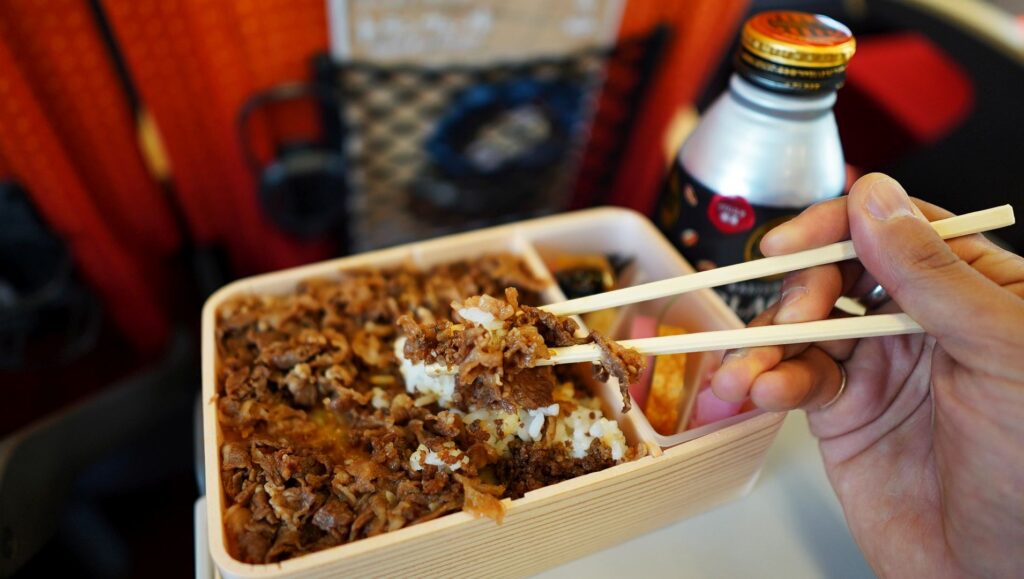
It was delicious and reasonably priced!
Series E8 Launch Collectibles
I also requested if they had any souvenirs on this line for the train’s launch, and the attendant pulled out a sheet showing the options.
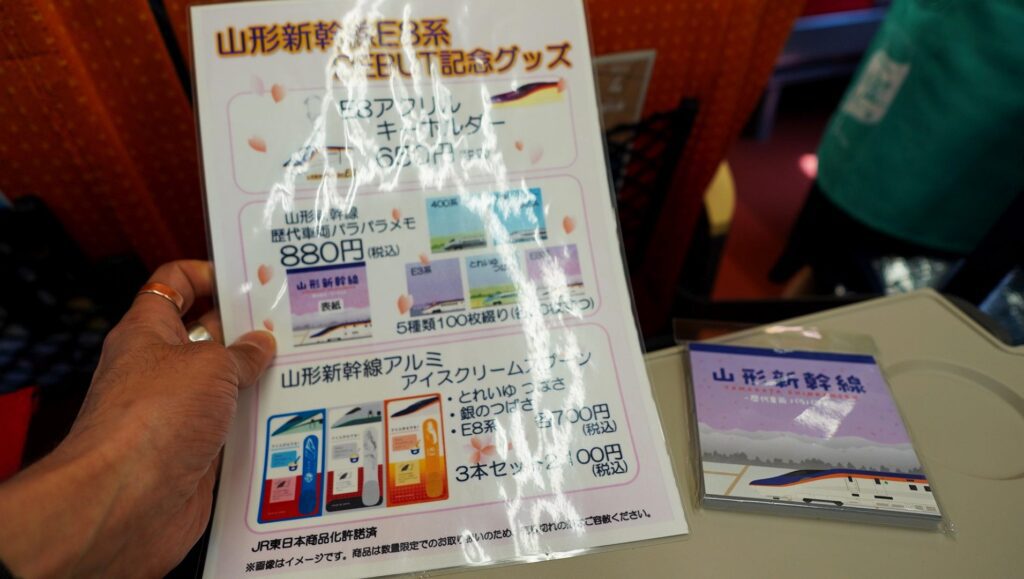
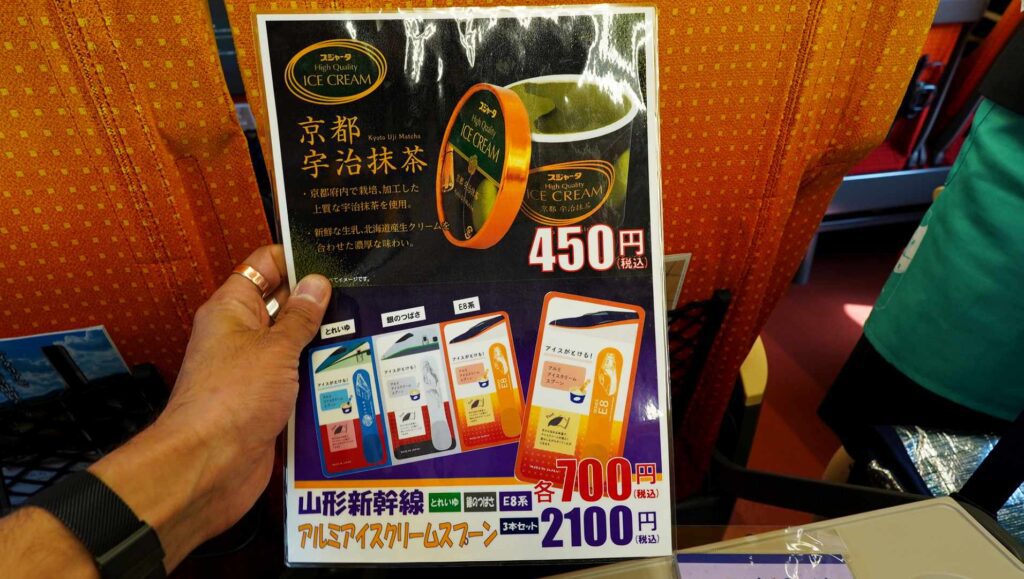
The selection is a bit more limited than on the Hokuriku Shinkansen train.

There is a Series E8 keychain available, a Yamagata Shinkansen notepad that shows all the different train sets used on this line, and also a set of ice cream spoons for the E8 series.
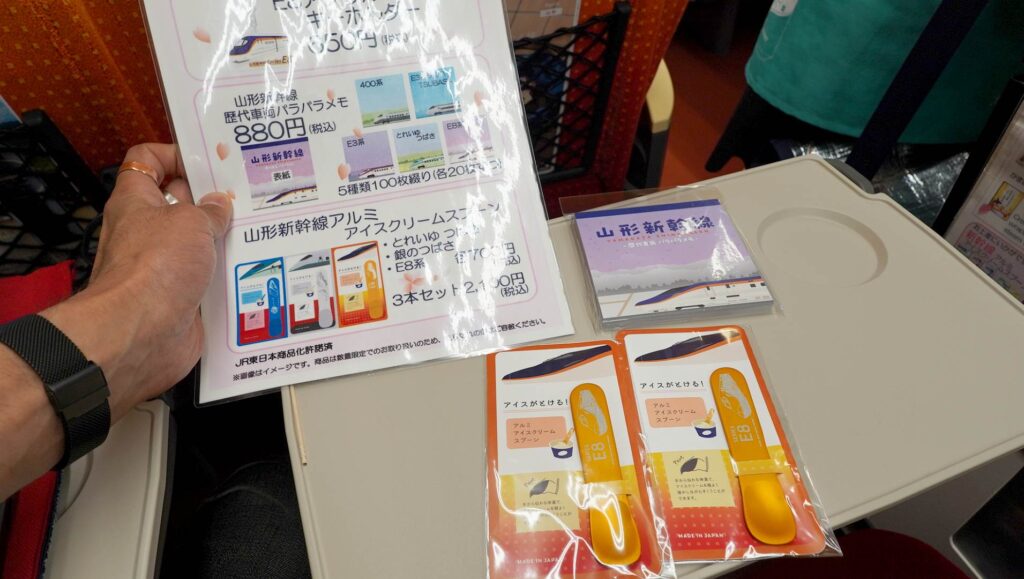
The attendant noted my train obsession.
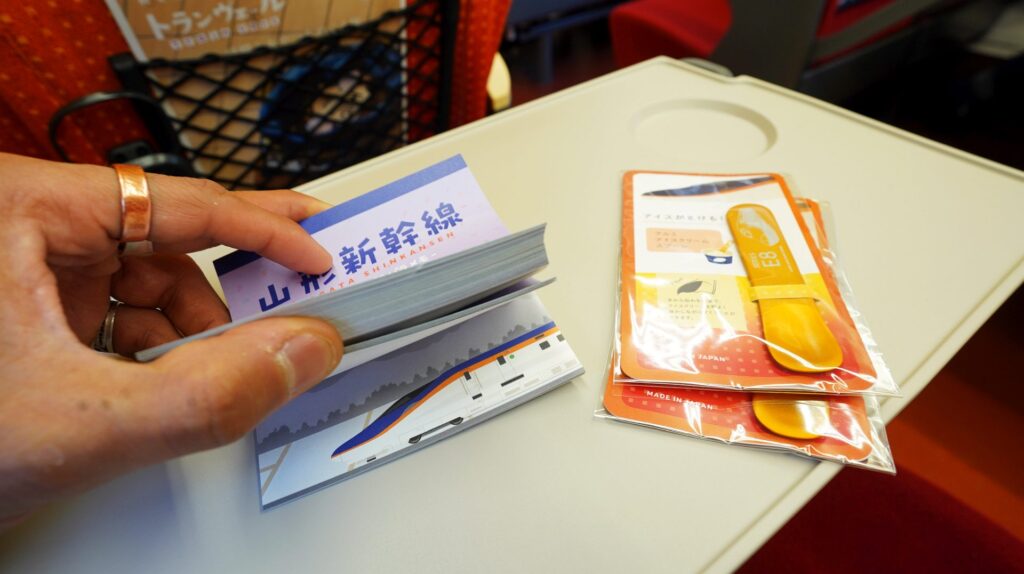
She kindly handed me some placards for the other train sets used on JR East, from the E3 thru the E7 series!
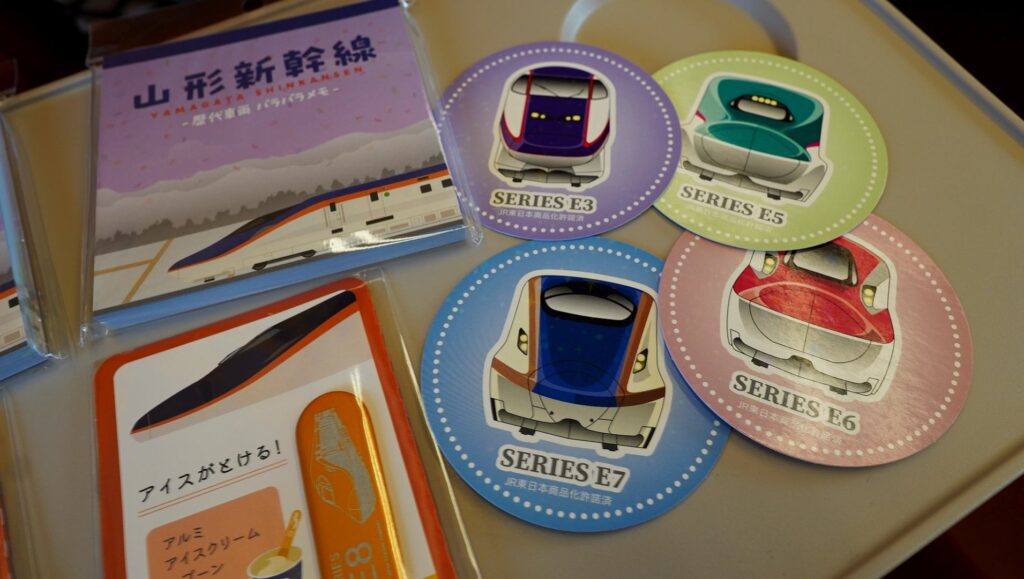
It’s so cool that train nuts are celebrated in Japan – it’s worth noting that literally at every single station, there were photographers, children, and plenty of adults recording the launch of this new train.
Arrival In Shinjo
I spent only 40 minutes in Shinjo at the end of the line, before taking the same train southbound to Tokyo in the Green Car.

Meaning, I actually spend 15 minute of this foaming over the new train, as well as all the cool displays for the train’s launch.
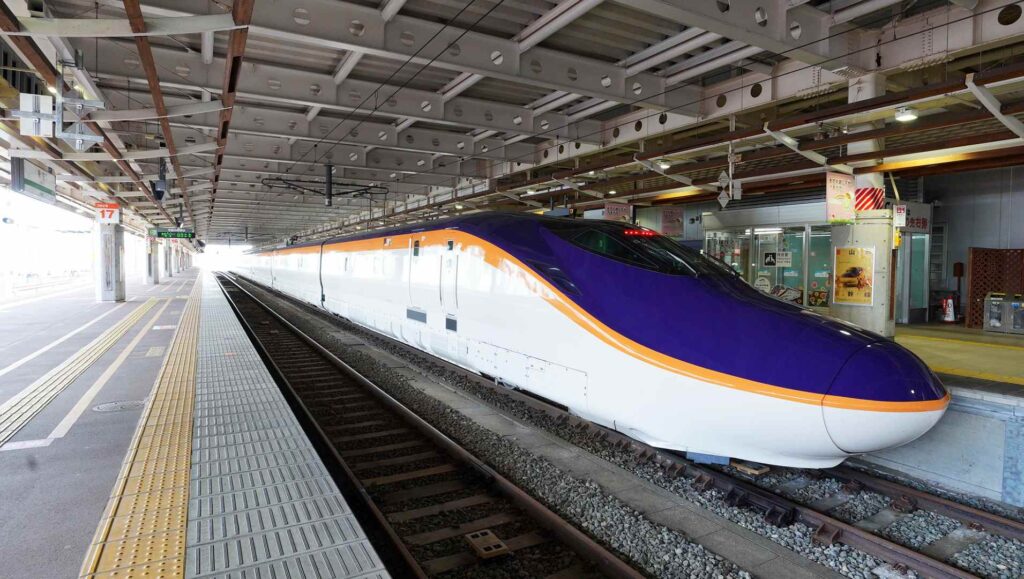
Other photographers were on the platform doing the same.
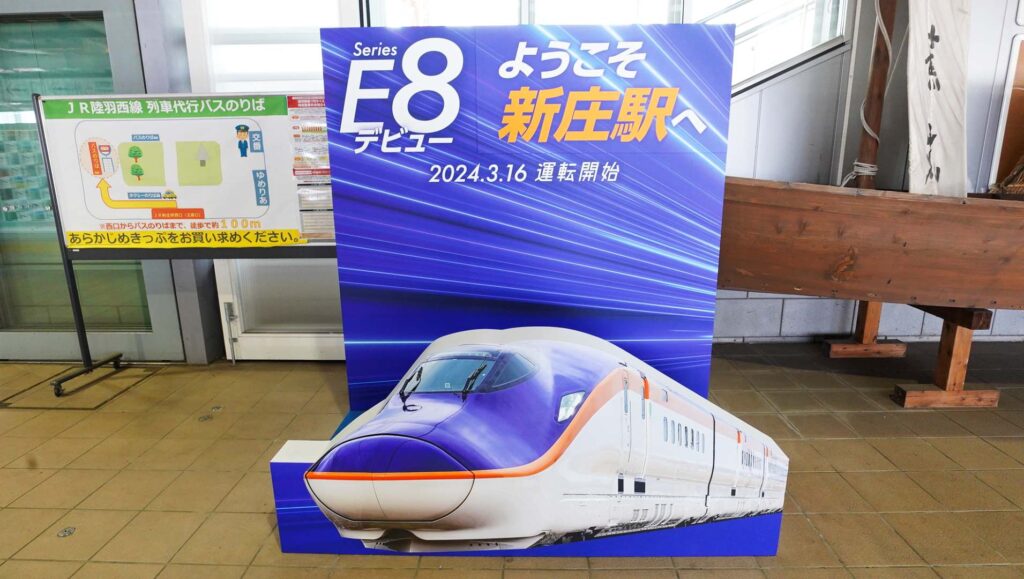

This is such a sexy train, in my opinion!
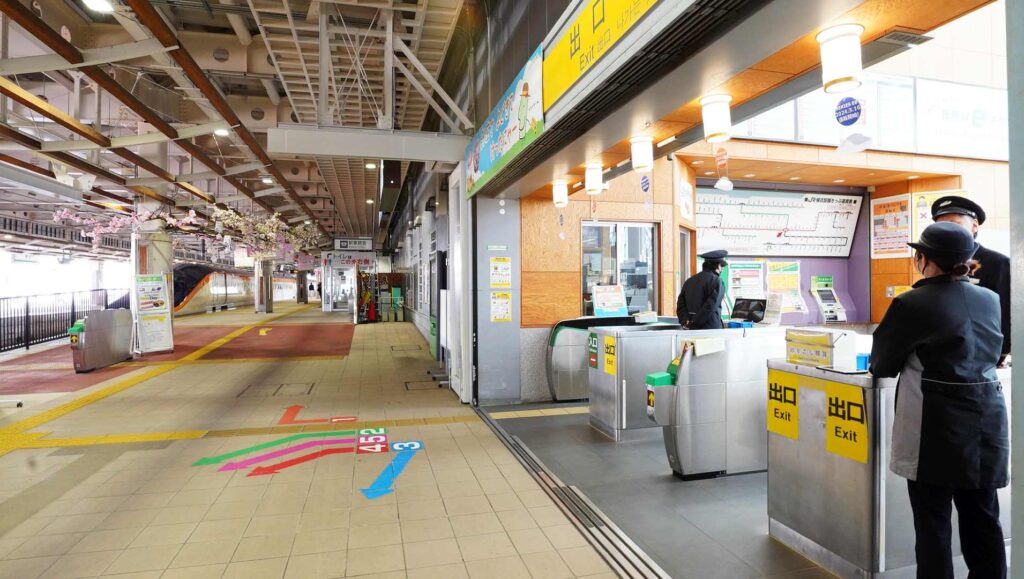
The Shinjo station is a large modern complex that houses many Japanese displays, as well as a tourist office and also advertisements for classic train rides.
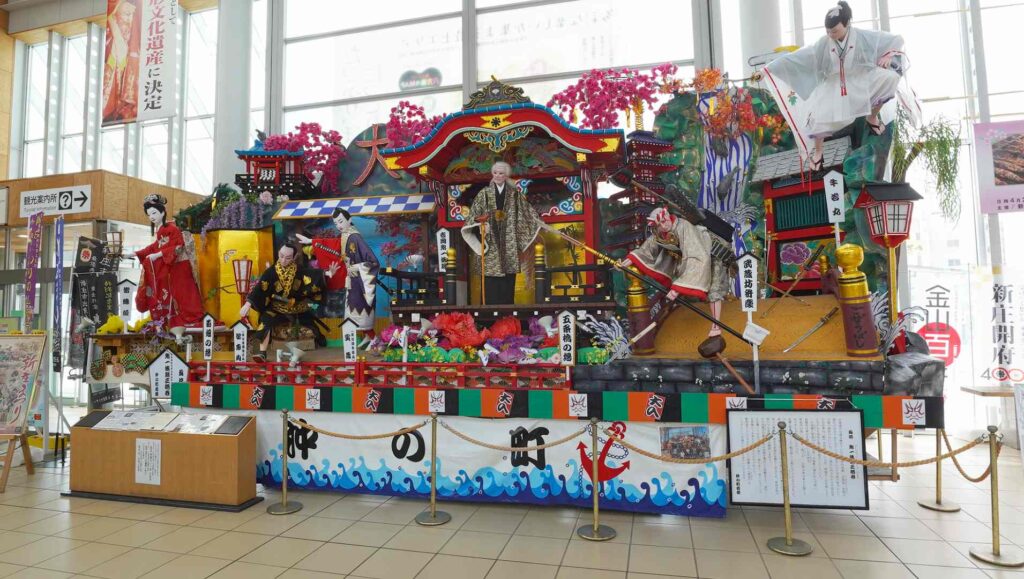
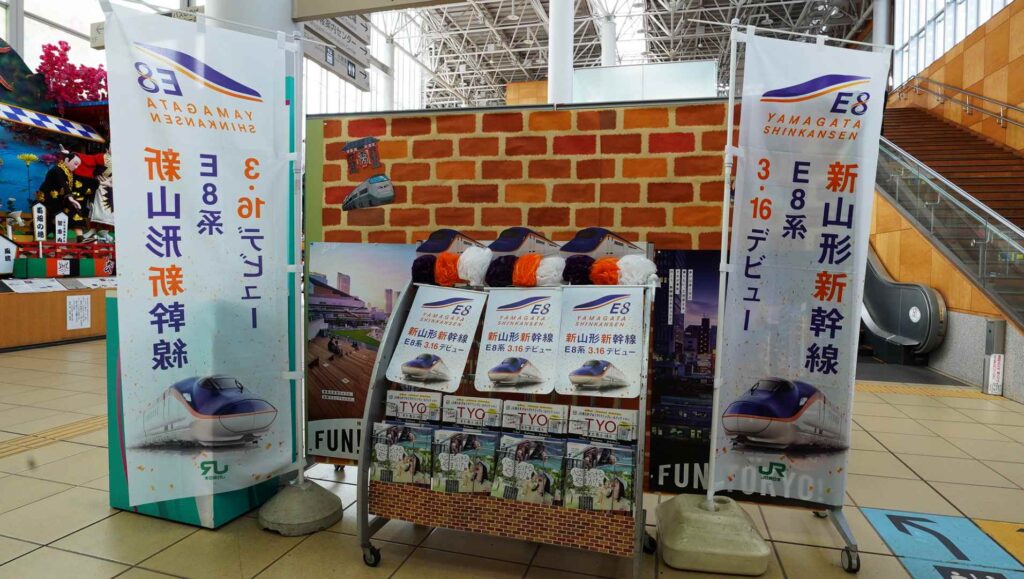
Final Thoughts
I think the Shinkansen is hands down the best high speed train system in the world, and JR East is in my opinion the best system out of the five in Japan.

The E8 Series is an awesome upgrade over the E3 series.
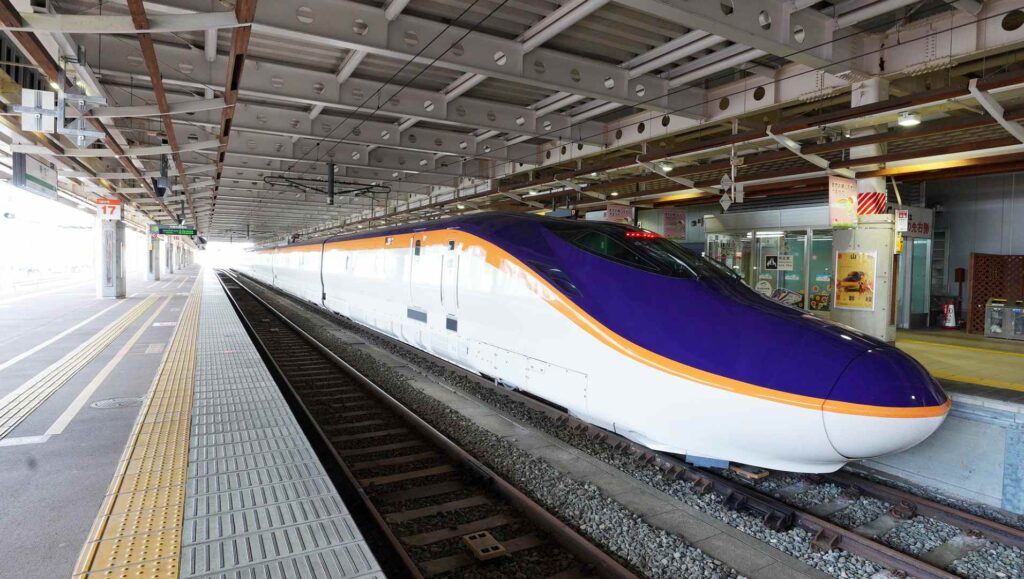
Overall, the economy class seats are extremely comfortable – honestly, they’re perfectly fine for a long journey on this line. I was on my train for three hours and didn’t regret choosing Economy Class over Green Class on the Northbound run. On the Southbound run, I tried Green Class, posted here in a separate review.
Verdict: 10/10
My only compliant is the high vibration we experienced on one part of the route as the train was running at the top speed.
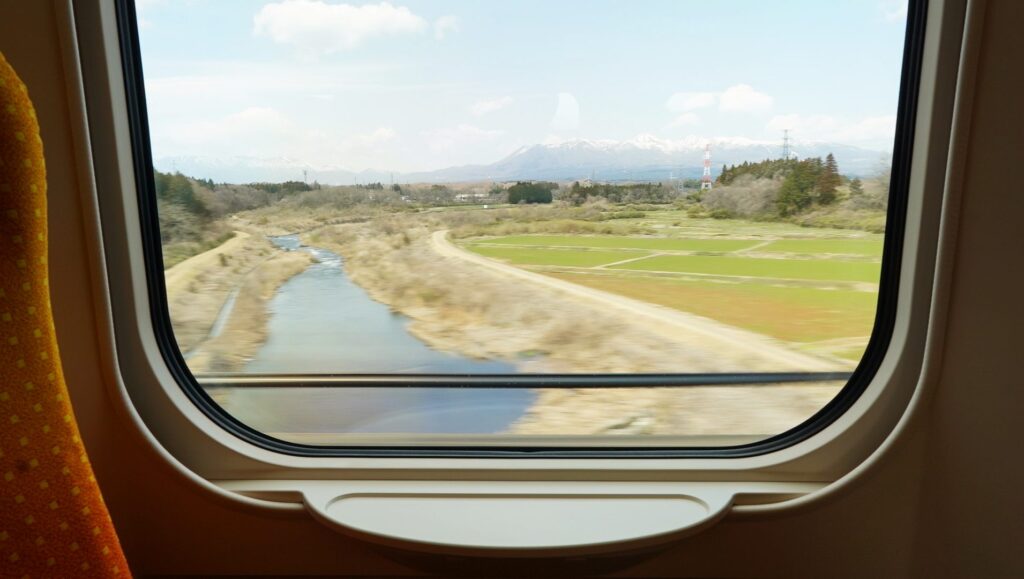
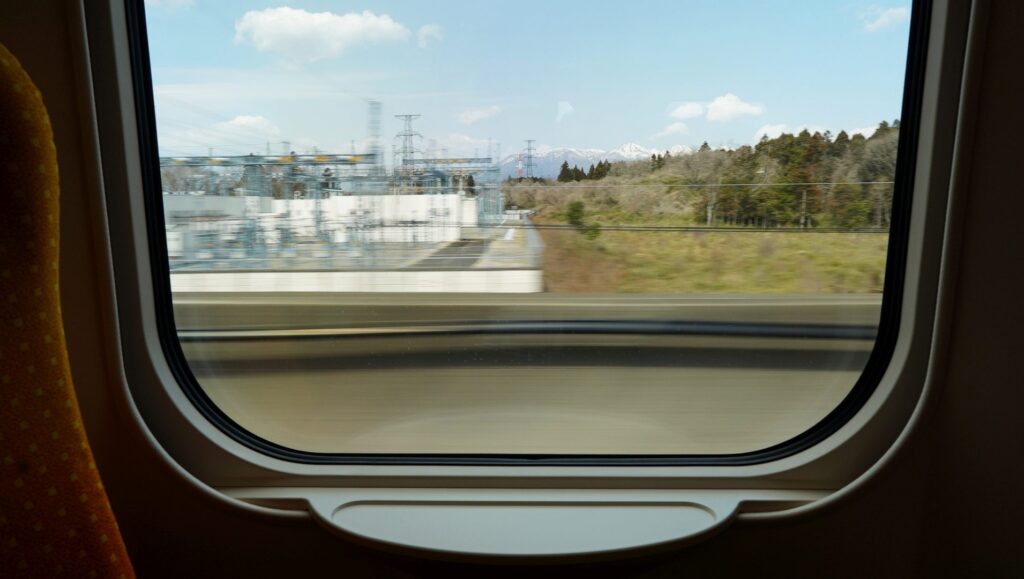
It wasn’t that bad, but feels a bit like mild turbulence on an aircraft.

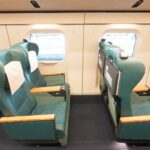
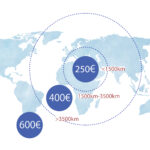
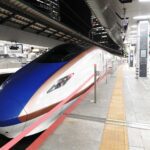
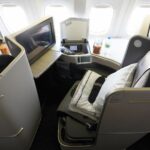

 Table Of Contents
Table Of Contents